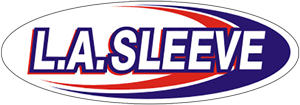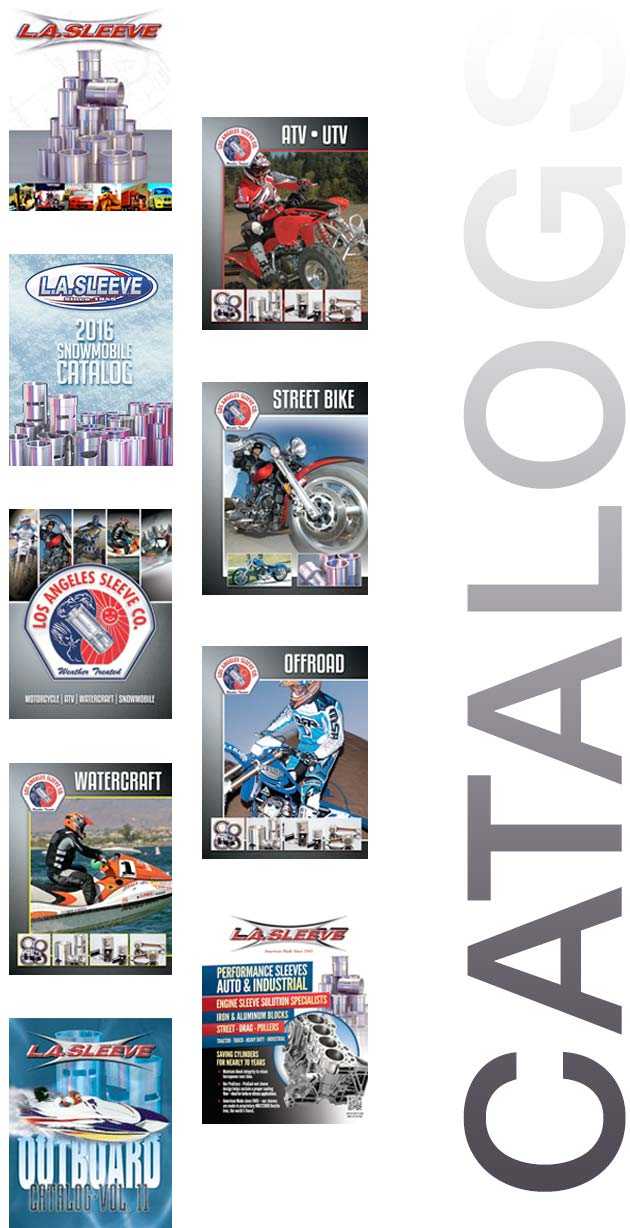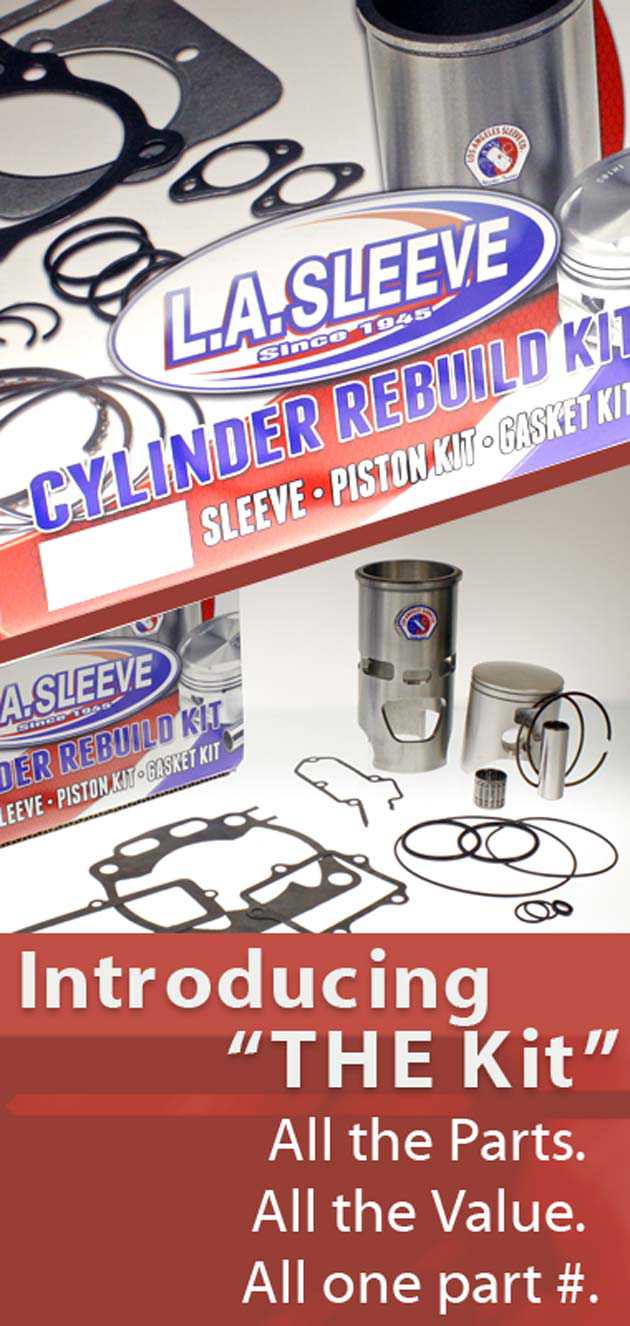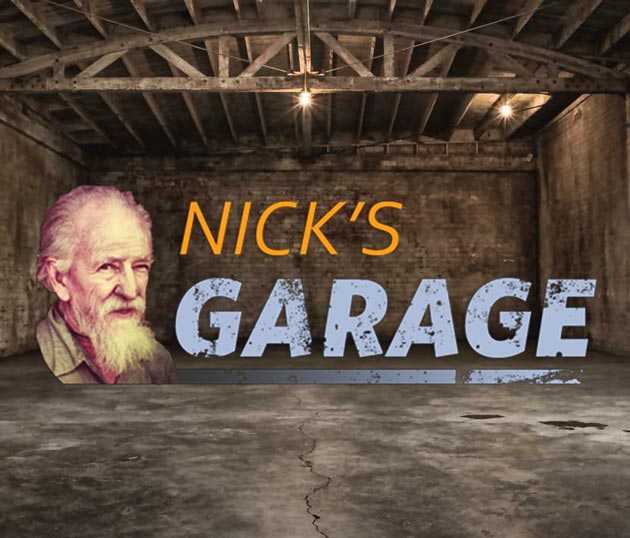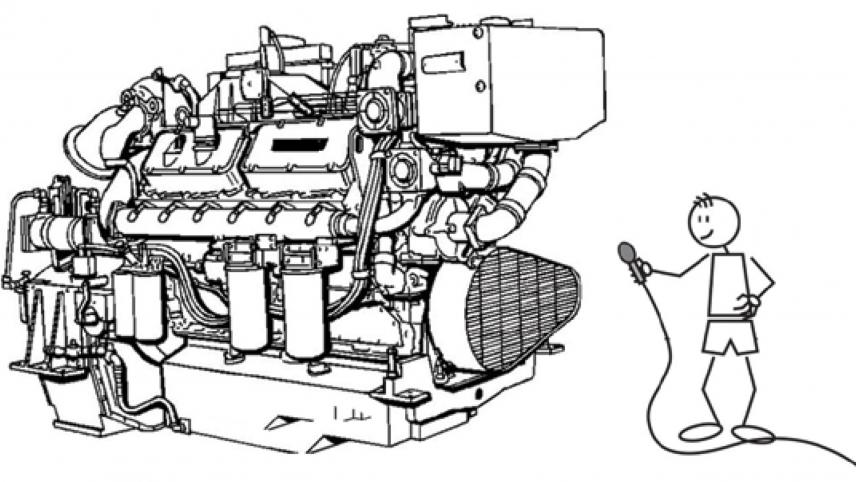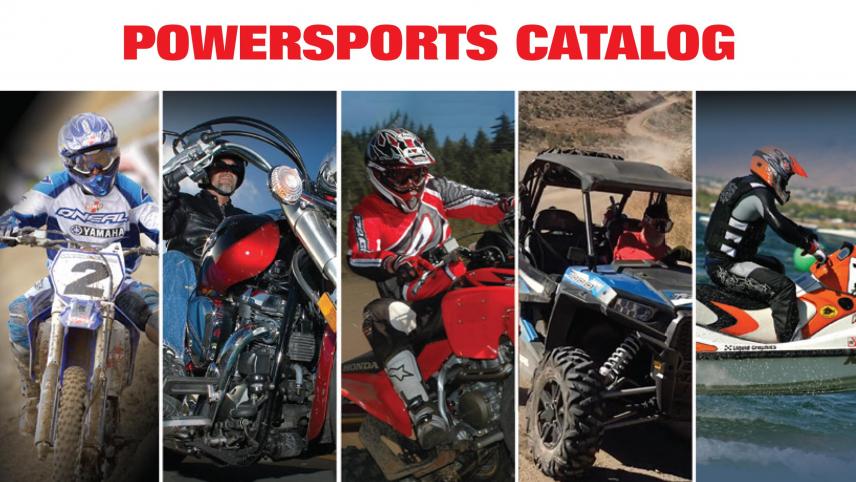Super Street Project K24 Block Sleeving: In The Shop With L.A.SLEEVE
May 23, 2018 by L.A.SLEEVE
Text by Rodrez—Courtesy of Super Street Online
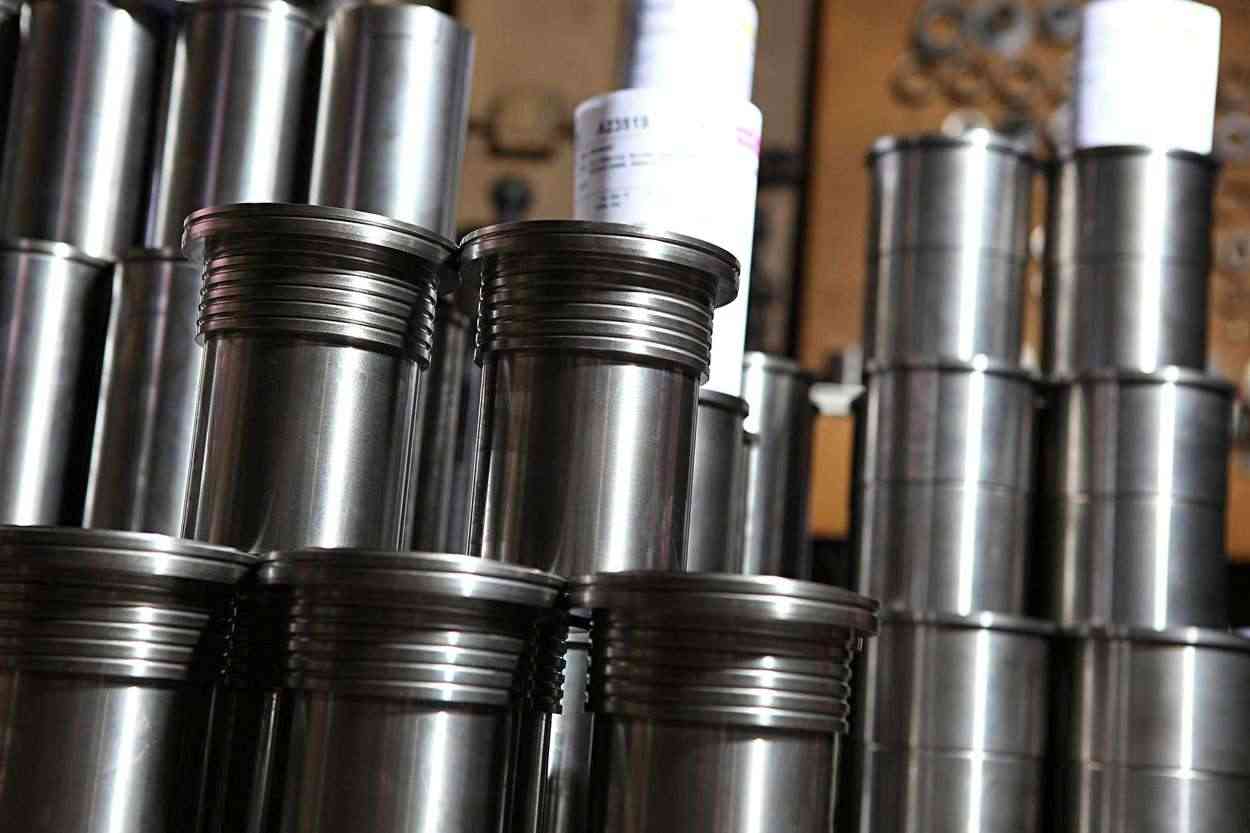
The idea to put together a solid K24/K20 combo wasn’t something drummed up during a think session and picked apart in great detail. As a matter of fact, it randomly popped into my head after paying a visit to our company storage facility and realizing there was a 5th gen Civic hatch just collecting dust, and when I say collecting dust, I’m talking nuclear fallout levels of dust that tend to accumulate while sitting in a large warehouse with no movement whatsoever over a 5-year stretch.

Project K24 Pt 1 Project Sipper

Project K24 Pt 1 Project Sipper
The car had originally been built as an experiment by Import Tuner Magazine to extract the greatest MPG possible using Falken’s Ecorun tires, which had just released at that time, along with some aftermarket parts and custom changes to wring every ounce of mileage out of the VX hatchback. It was a success, but after the closing of Import Tuner, the car was parked and never touched again, other than to remove some of the parts from the original build-up.
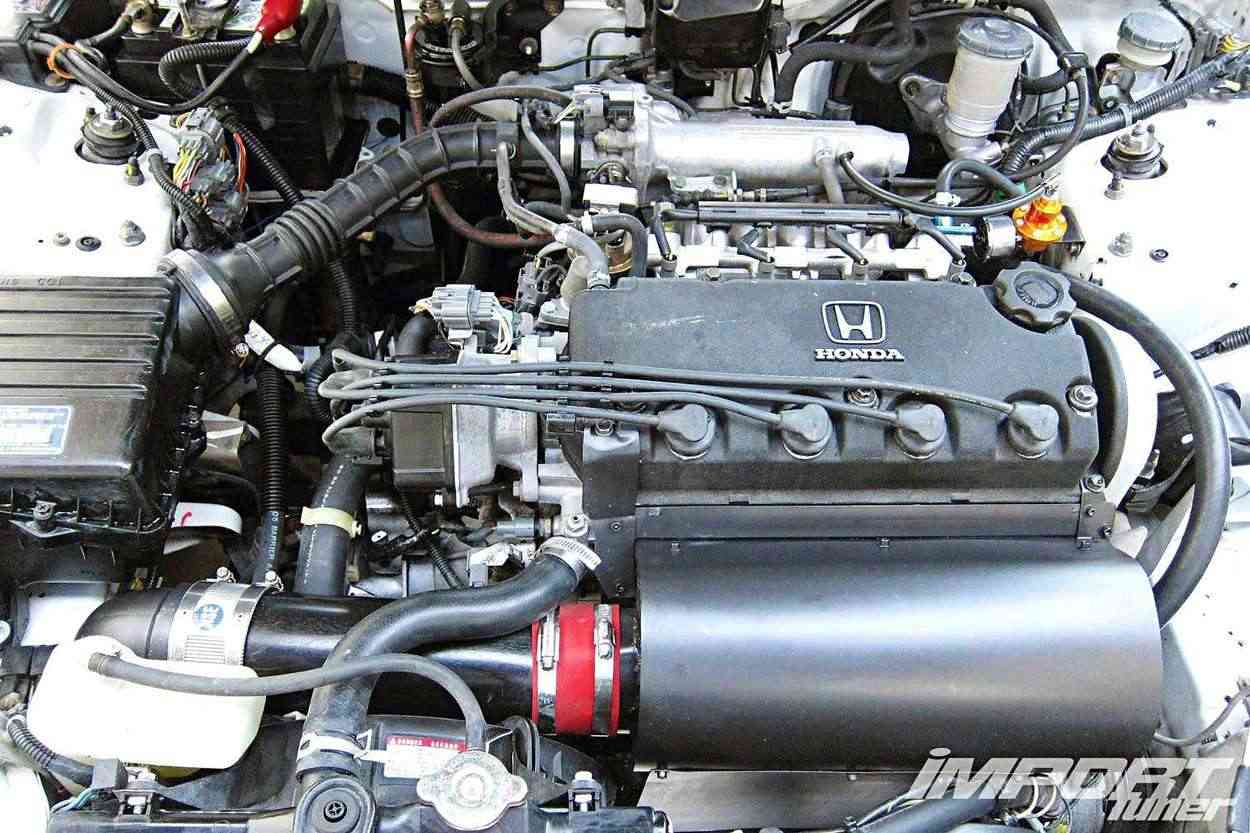
Project K24 Pt 1 Hot Air Intake
My idea is pretty simple: take the gas sipper project and go the complete opposite direction by making it into a lethal street car that throws MPG numbers out the window entirely. Not sure which engine I would go with, I tossed around a few different ideas to Loi Song of Sportcar Motion, who then offered me a K24 block for dirt cheap, and, well, that made my choice much easier. This story and the ones that come after it will concentrate solely on the engine build up, but the car itself will eventually be revisited once the heart is ready to go. Gathering parts takes some time, but the real challenge is finding the time, as I’m on my own with this one.
For now, part one of our K24 build up focuses on the very foundation of the build with a visit to L.A.SLEEVE, where the company shows us some of what they do and just how well they do it, using our new 2.4-liter block.
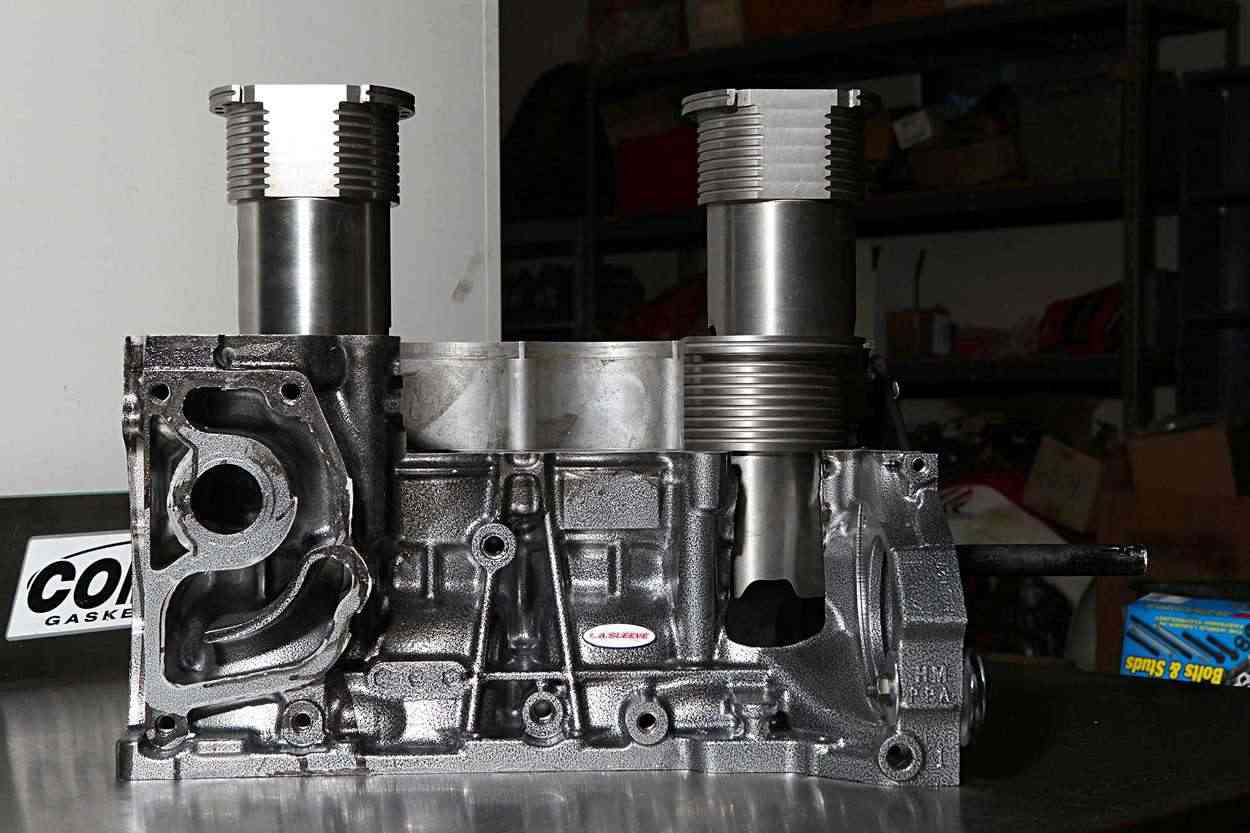
Project K24 Pt 1 L.A.SLEEVE Engine
Not unlike many U.S. businesses of the 1940s, L.A.SLEEVE started with a vision, a plan, and not surprisingly, an immeasurable amount of hard work. What it transitioned to is a lifelong brand run almost entirely by family that shows no signs of slowing, while wrapped up in an industry that’s as fickle as it is unforgiving. For a moment, forget the dot coms, social media, and Quickbooks, and instead, think back to a time when advertising was done via newspaper ads, simple word of mouth, and on the track, where real-world results spoke far louder than the anonymous digital reviews tossed about from behind a laptop screens these days.
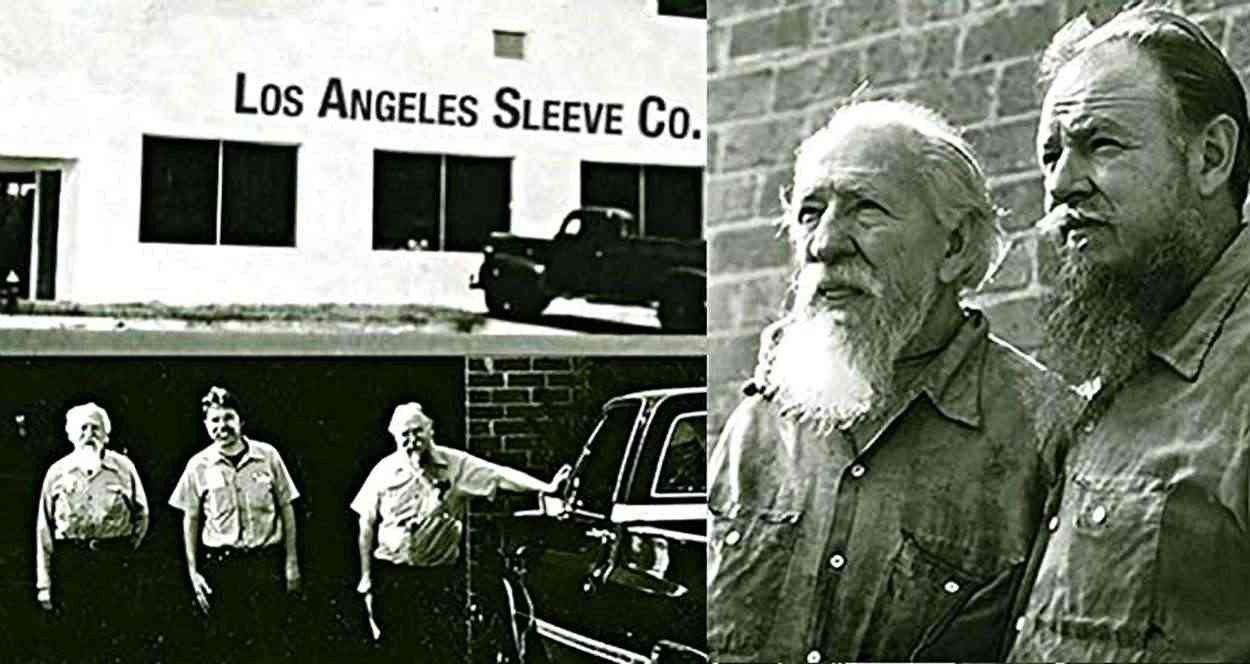
Project K24 Pt 1 L.A.SLEEVE
Founded in 1945 by Nicholas W. Metchkoff, Los Angeles Sleeve Co. was based out of small factory in L.A., producing cylinder sleeves for both the auto and tractor industries. Fast forward five years and the founder’s son, Gary Metchkoff, took the family brand into the racing and heavy-duty truck industries. A decade later, as the brand continued to grow, L.A.SLEEVE began supplying sleeves to South America before eventually going global. By 1968 it expanded into the motorcycle market and this was an important step because that industry was in its infancy at that time, and today is more commonly known as the power sports industry.
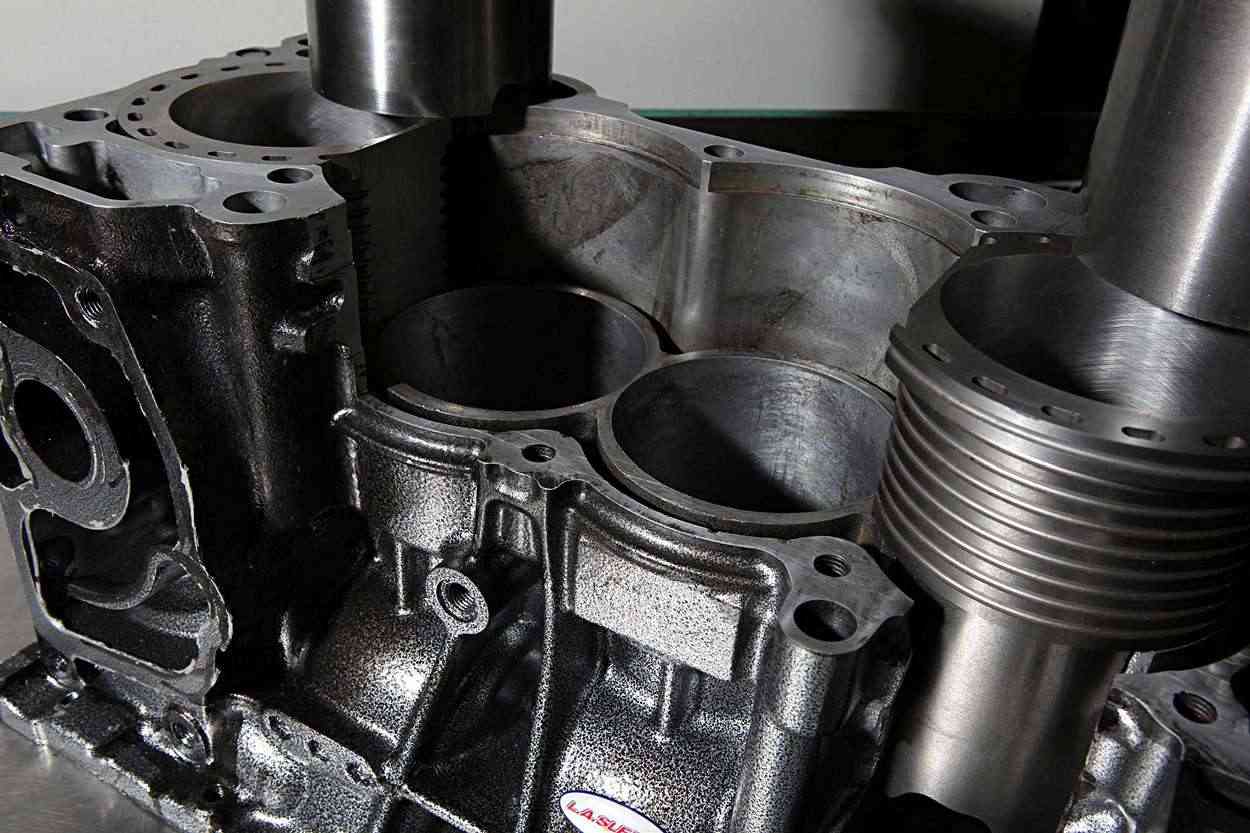
Project K24 Pt 1 L.A.SLEEVE Display
Family owned businesses in the U.S. aren’t at all uncommon, however, the ones that stay afloat beyond their second generation certainly are. Only about a third of these businesses make in through the first two generations and transitioning into the third brings that number down considerably, by about fifty percent. Blood is thicker than water and when it comes to business logistics and longevity that can sometimes be a negative thing. In the case of the Metchkoff family, however, the family bond is one of the main ingredients to their success. And after over 70 years in business, they’ve got a good understanding of what success really means.
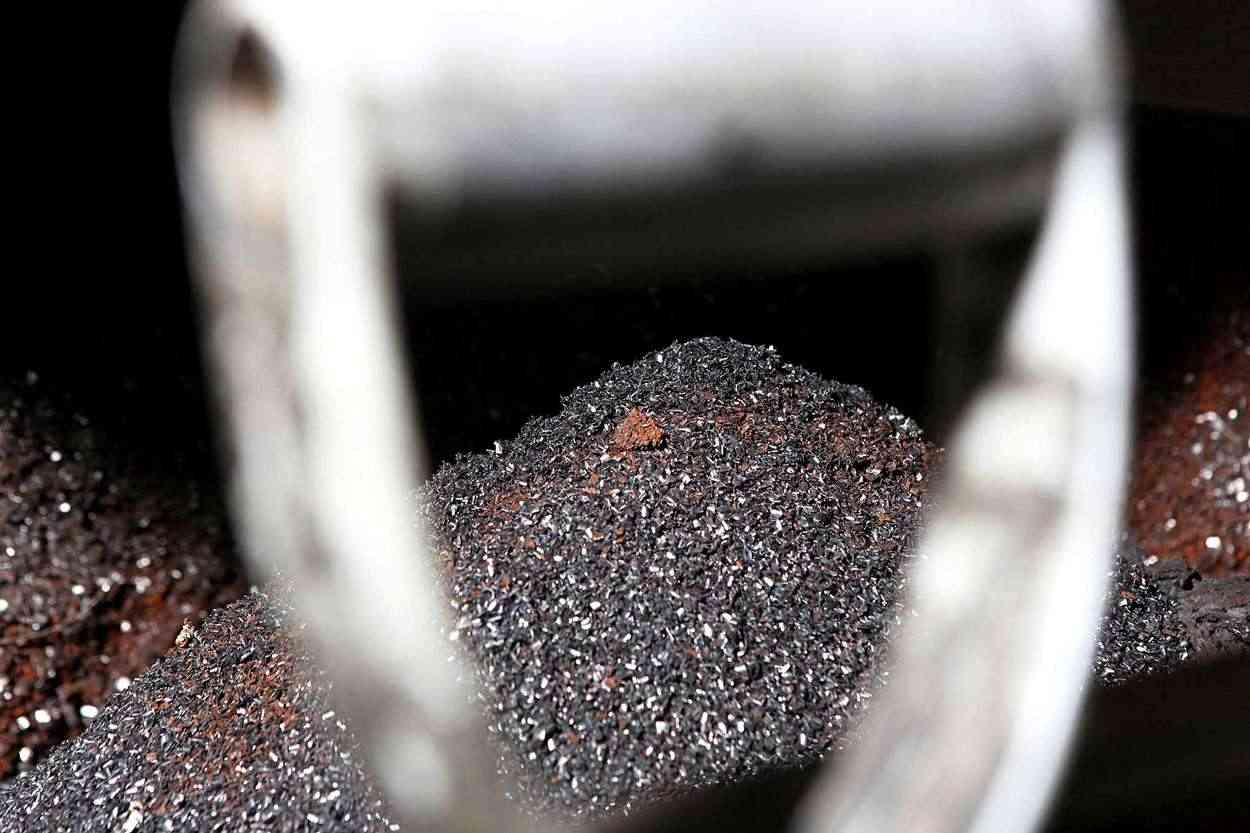
Project K24 Pt 1 Scrap Metal
Arrive at L.A.SLEEVE’s Santa Fe Springs location—a pair of large buildings that sit alongside neighboring businesses that all seem to bleed into SoCal’s familiar, never-ending business park landscape—and from the outside, you’d never believe that this building houses the genesis of some of the fastest cars in the world (think PZ Tuning and their record smashing ninth-gen. Civic) while simultaneously catering to multiple industries that rely on transportation—transportation that stays active with the help of L.A.SLEEVEs’ parts production.
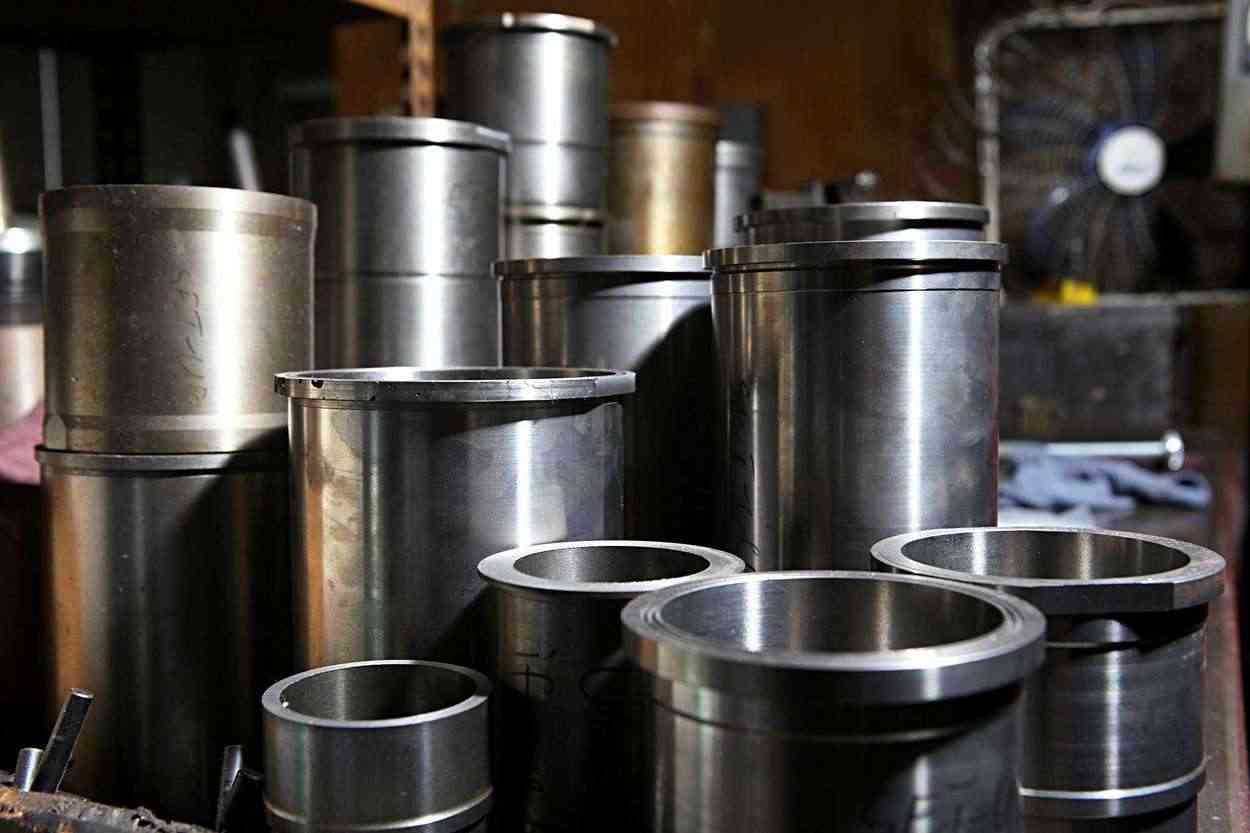
Project K24 Pt 1 L.A.SLEEVE(s)
A leader in sleeve innovation and design, as well as installation, for over seven decades, the group supplies centrifugally-spun Moly 2000 iron alloy sleeves to OE manufacturers, production rebuilders, small engine repair shops and of course, the reason you’re so interested, performance build applications. Take a peek inside the operation and you’ll find sleeves of various sizes, some small enough to fit in the palm of your hand while others are almost big enough to hide behind. That’s because L.A.SLEEVE has applications for just about everything, including ATV/UTV, off-road motocross, heavy duty industrial, marine applications and personal watercraft, snowmobile and even scooter and karting vehicles.
Dave Metchkoff granted us full access to the L.A.SLEEVE R&D and production facilities and walked us through some of the various processes that take place and how much care is taken with each application. The most interesting part of the tour was just how much of the old school meshes with the new school in terms of process, theory, and even machinery. While there, we also got a good look at our new project K24 block as it received the L.A.SLEEVE treatment.
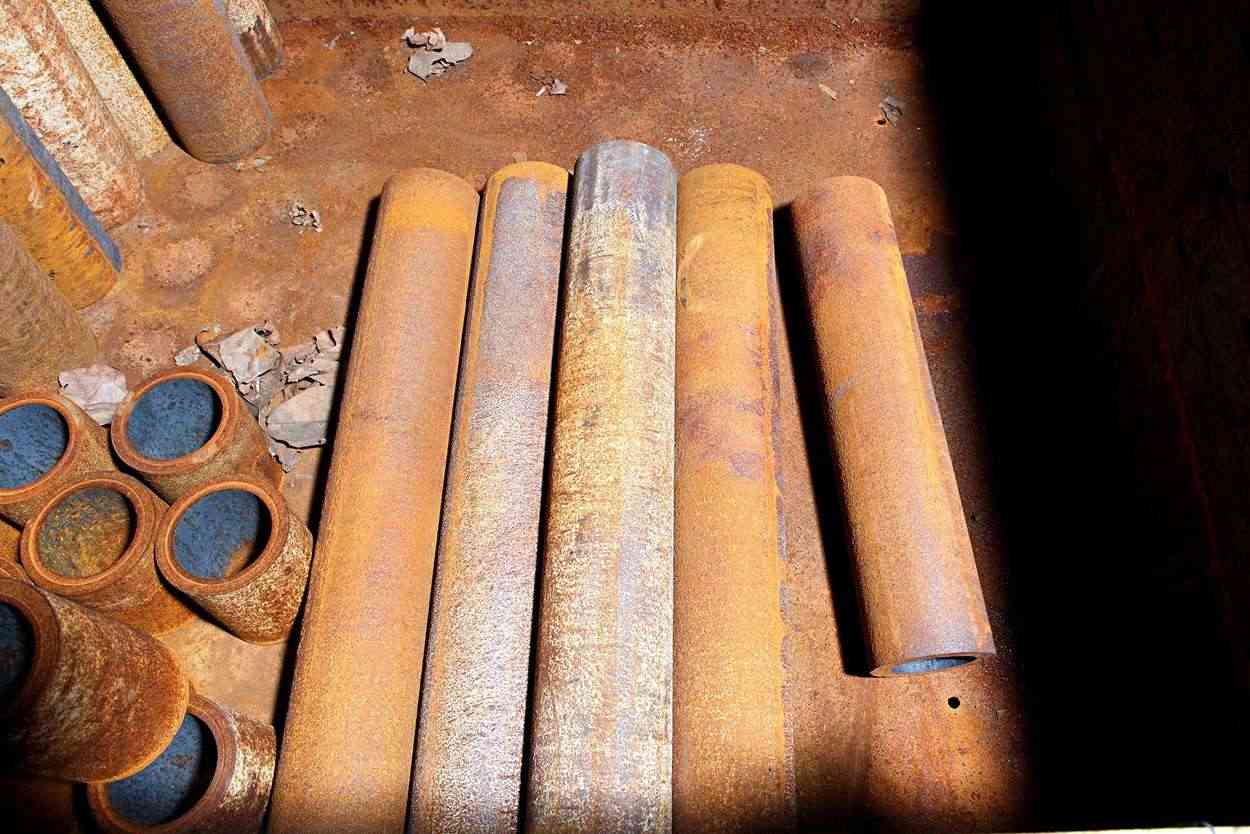
Project K24 Pt 1 Sleeve Material
In their raw state, these sleeves might appear to be waste. Rust has formed and they look to be rejects, but that coating is no mistake.
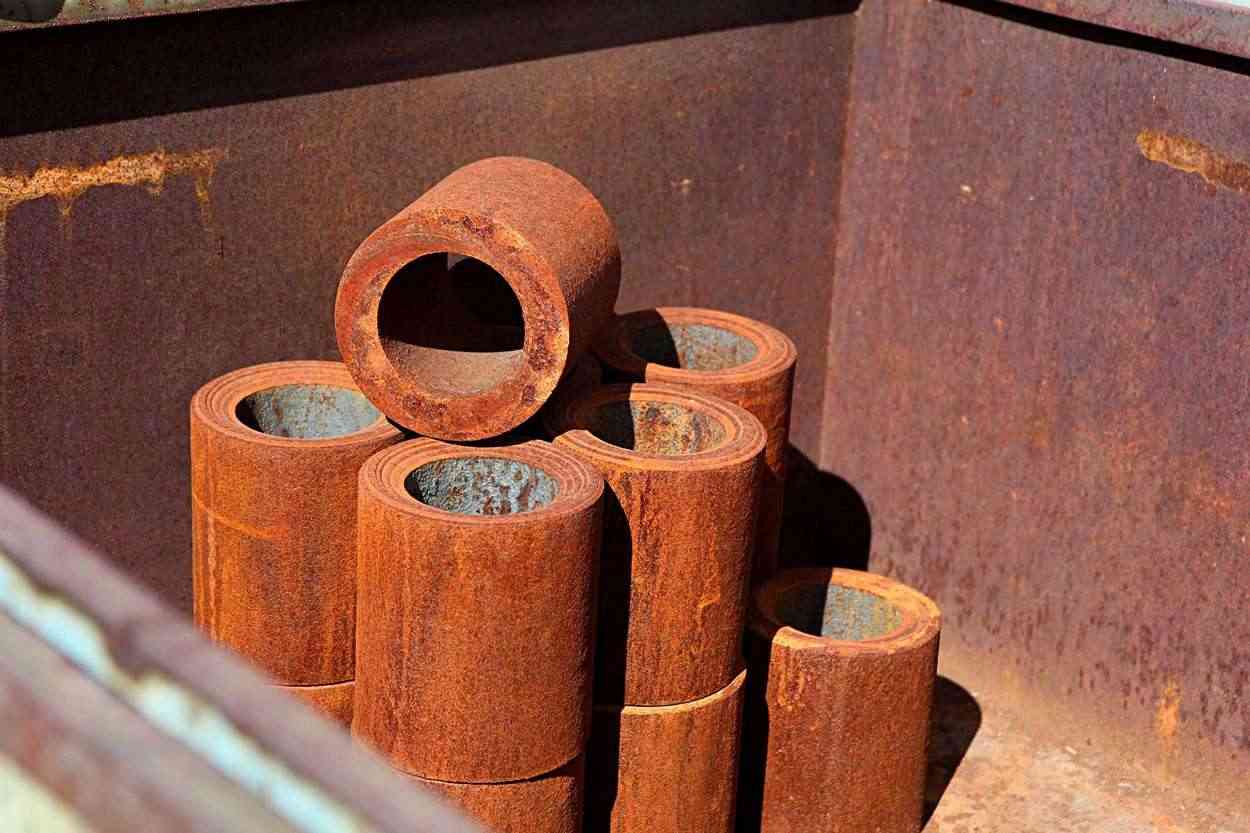
Project K24 Pt 1 Sunbaking
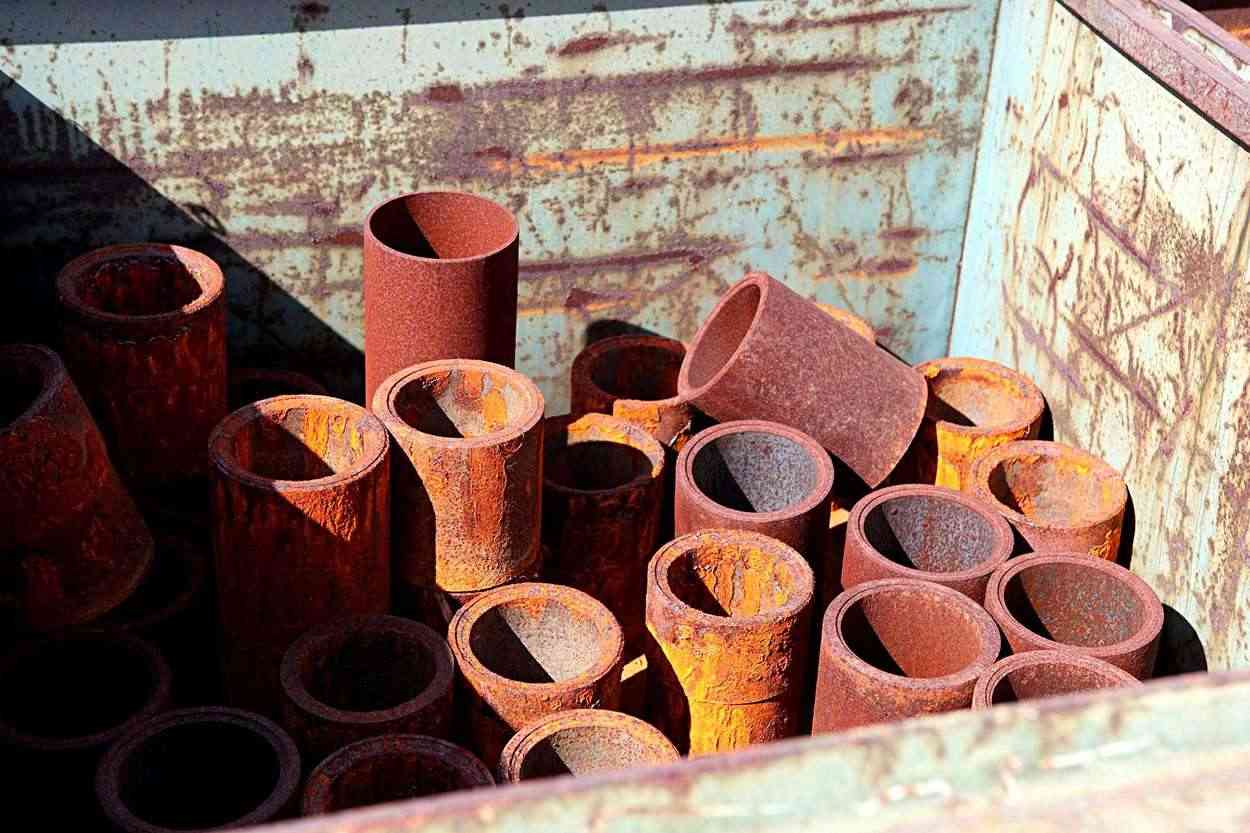
Project K24 Pt 1 Sunbaking
We headed to the back of the building where a number of large containers filled with raw material are left to bake in the sun. The result is the rusted coating you see and the reason is strength. According to Metchkoff, this process of baking actually adds considerable strength to the end result.
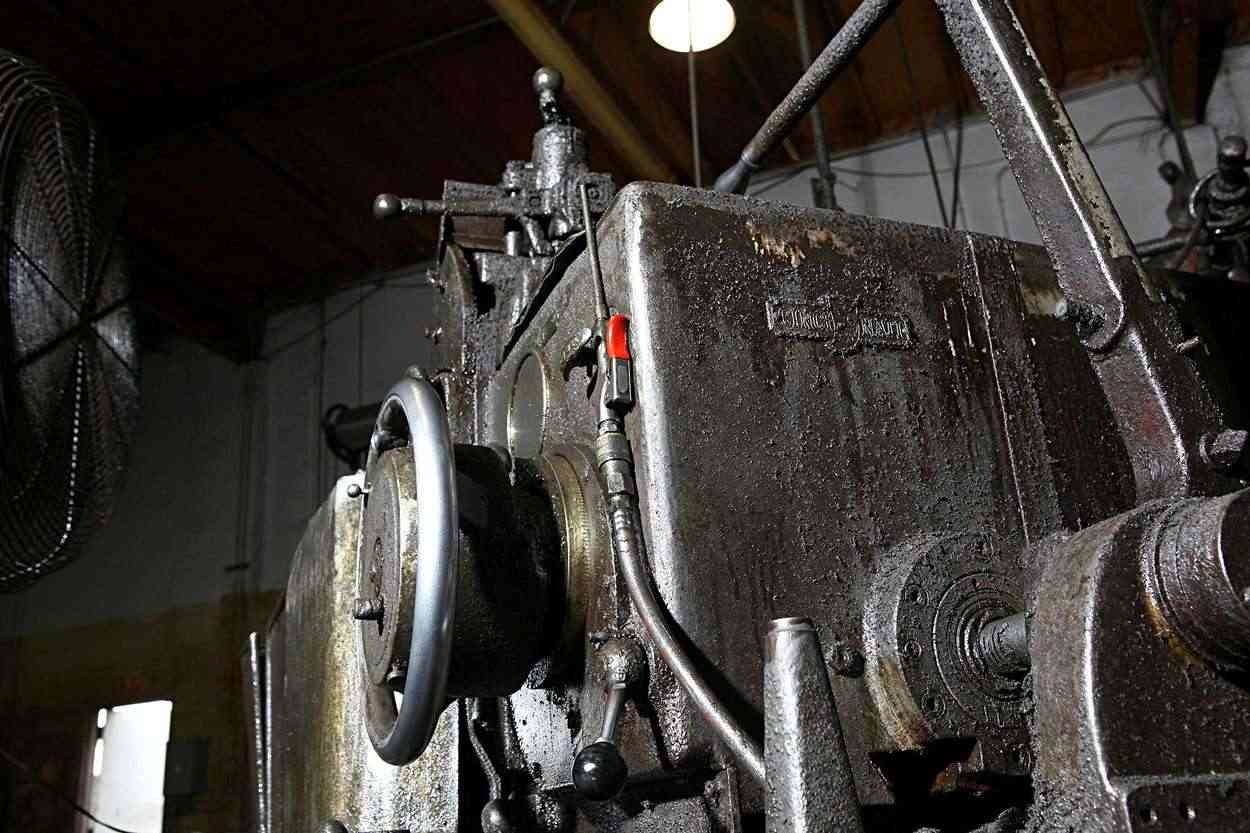
Project K24 Pt 1 Cincinatti Center Less Grinder
It might look like something out of an old horror movie but this Cincinnati center-less grinder is as loyal as they come, and is used to finish out diameters of each sleeve for the perfect roundness and taper.
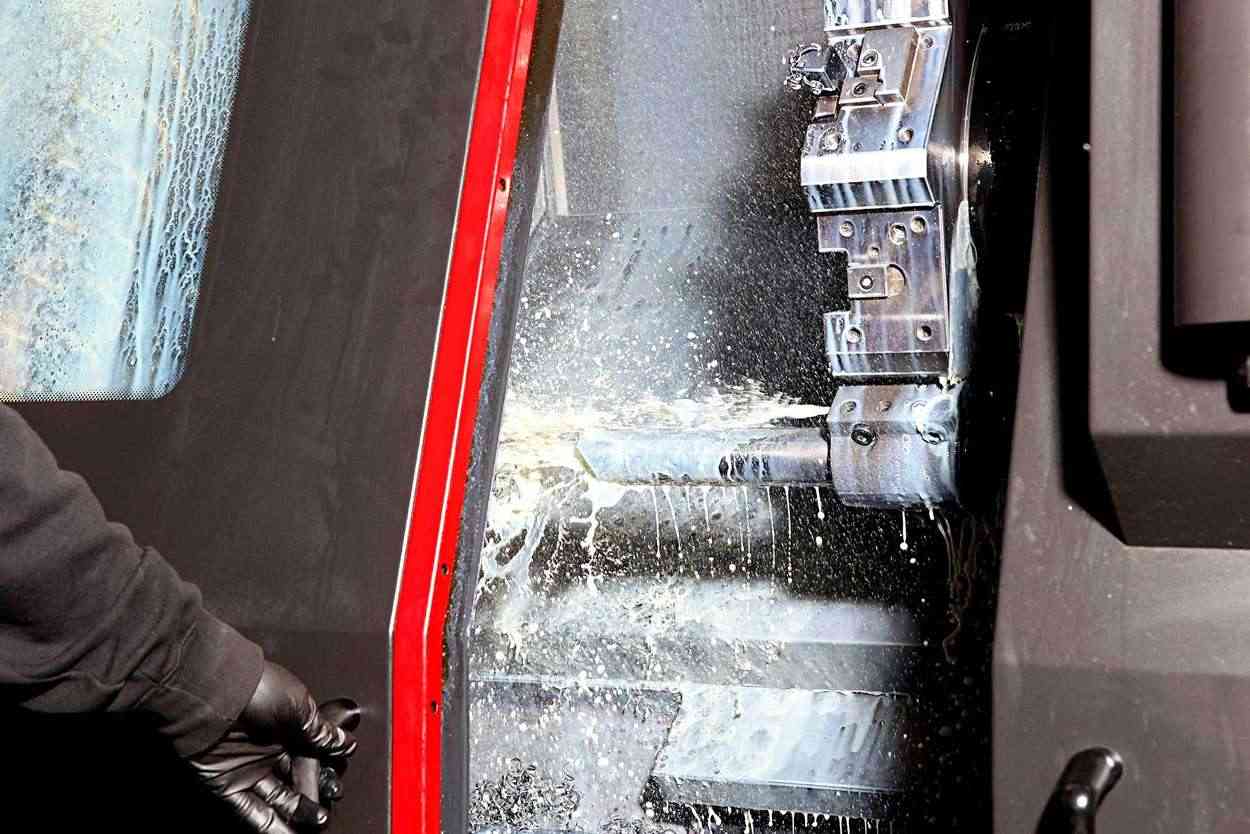
Project K24 Pt 1 Lathe
That raw casting material sees time inside this lathe, where it plunges into each section to create the sleeves that you’ll be using.
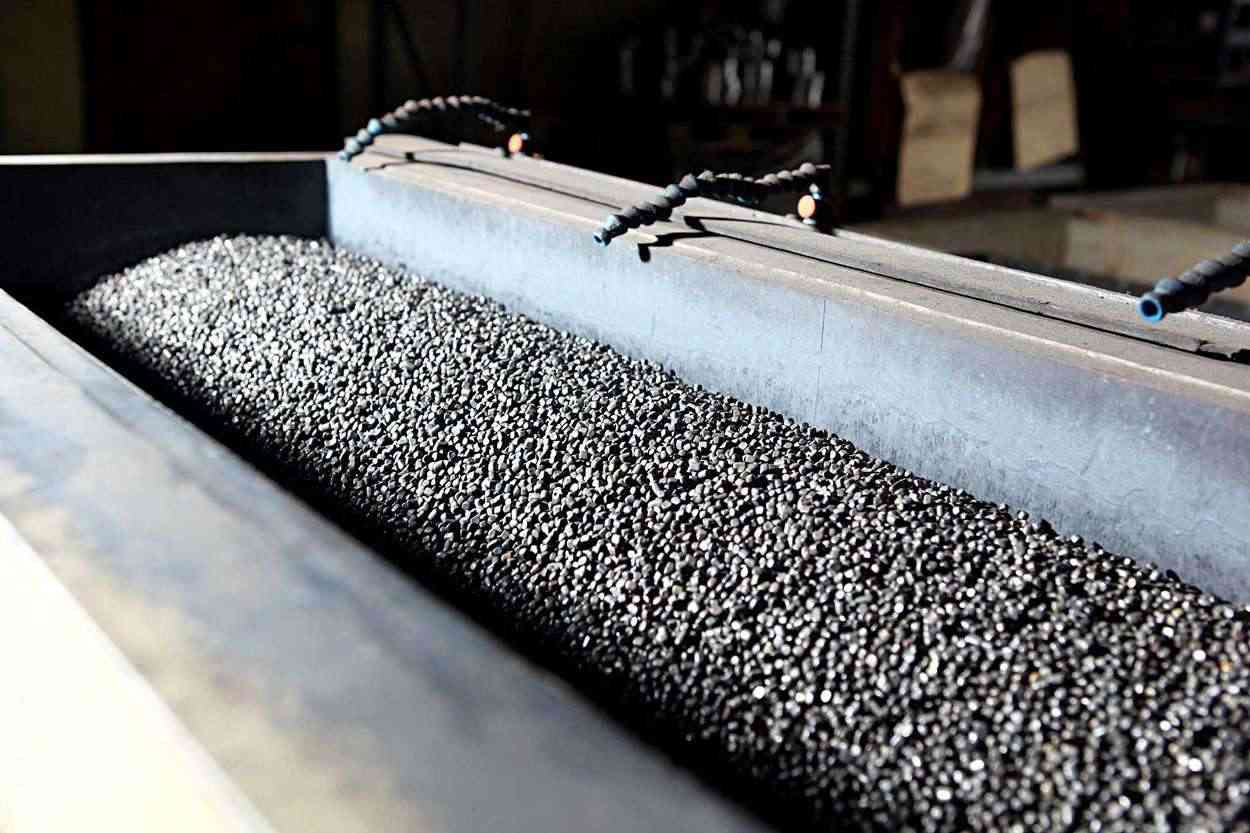
Project K24 Pt 1 Deburring Machine
In order to knock off any sharp burrs or edges, this de-burring machine is on duty.
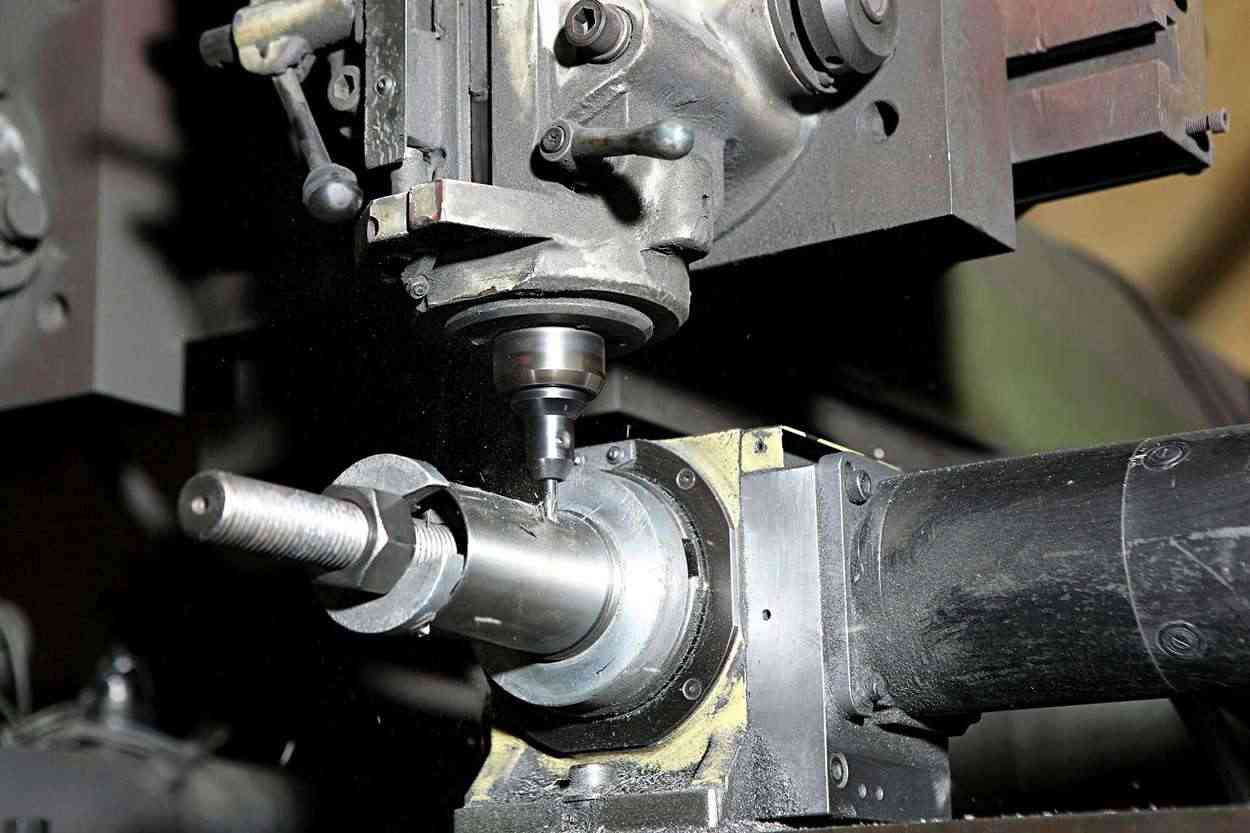
Project K24 Pt 1 CNC Milling Center Machine
For their two-stroke sleeves, this CNC Milling center machine cuts precision port holes.
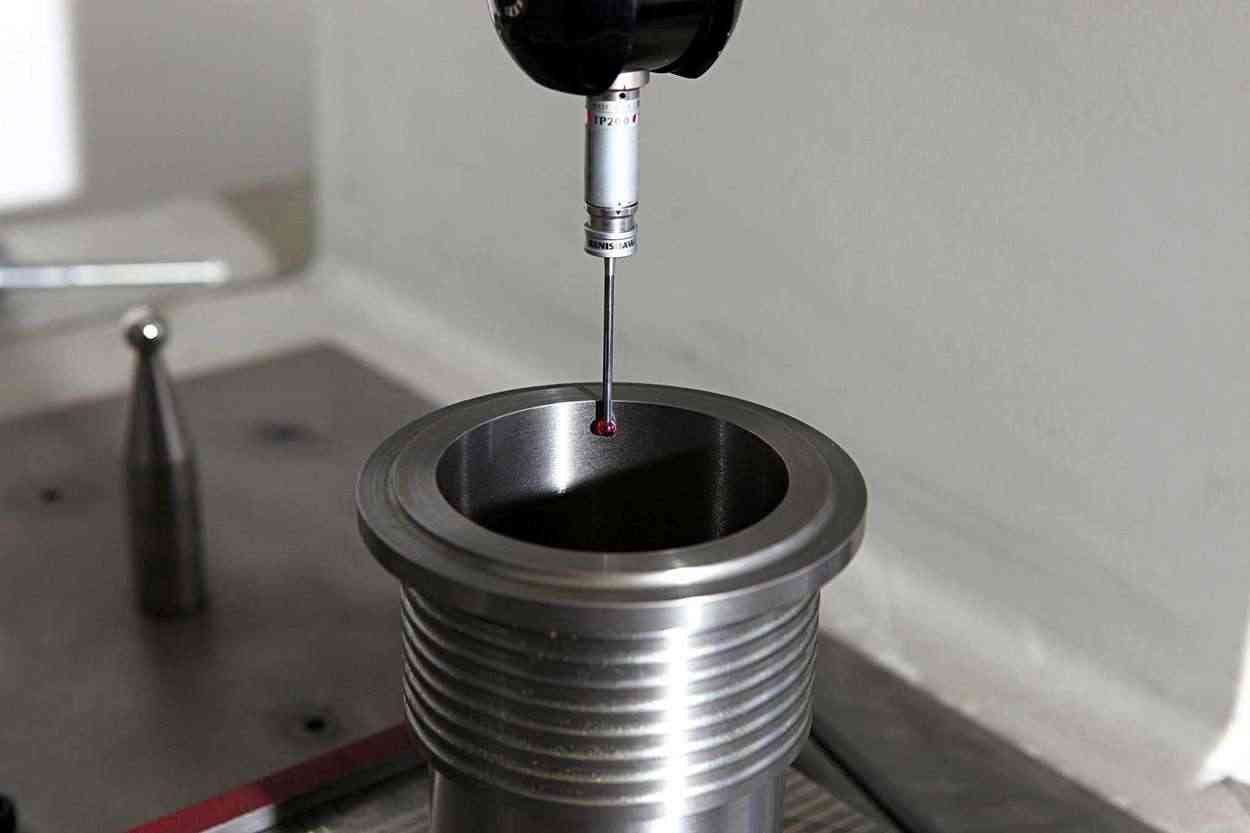
Project K24 Pt 1 Computerized Measurement Monitor
Checking sleeve sizes during quality control involves using this Computerized Measurement Monitor (CMM). It’s a slow and steady process that helps insure consistency during production.
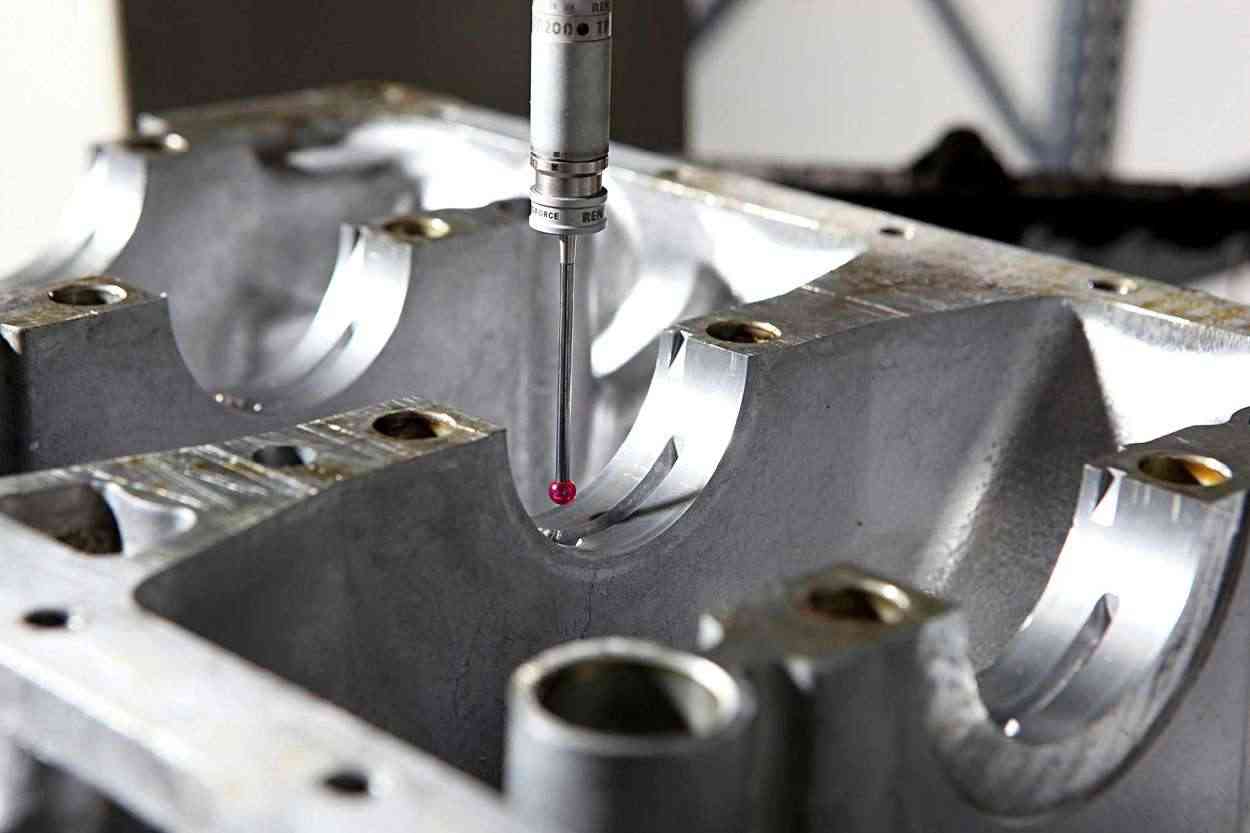
Project K24 Pt 1 Cmm Tolerance Check
The CMM system also plays a part in checking for roundness and taper of block mains bearing areas, as seen here.
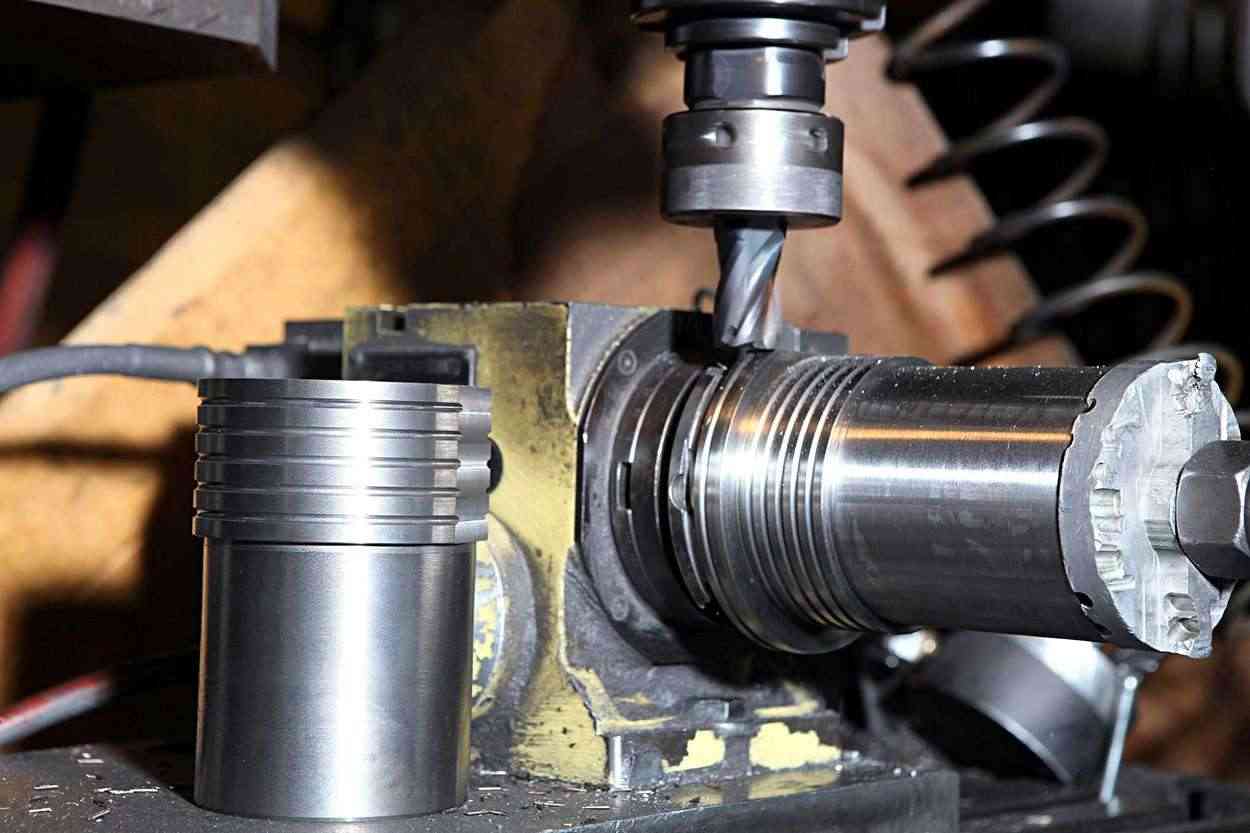
Project K24 Pt 1 Flatted Area Center Cutting
Center cutting the flatted area of the sleeve, which will Siamese against one another
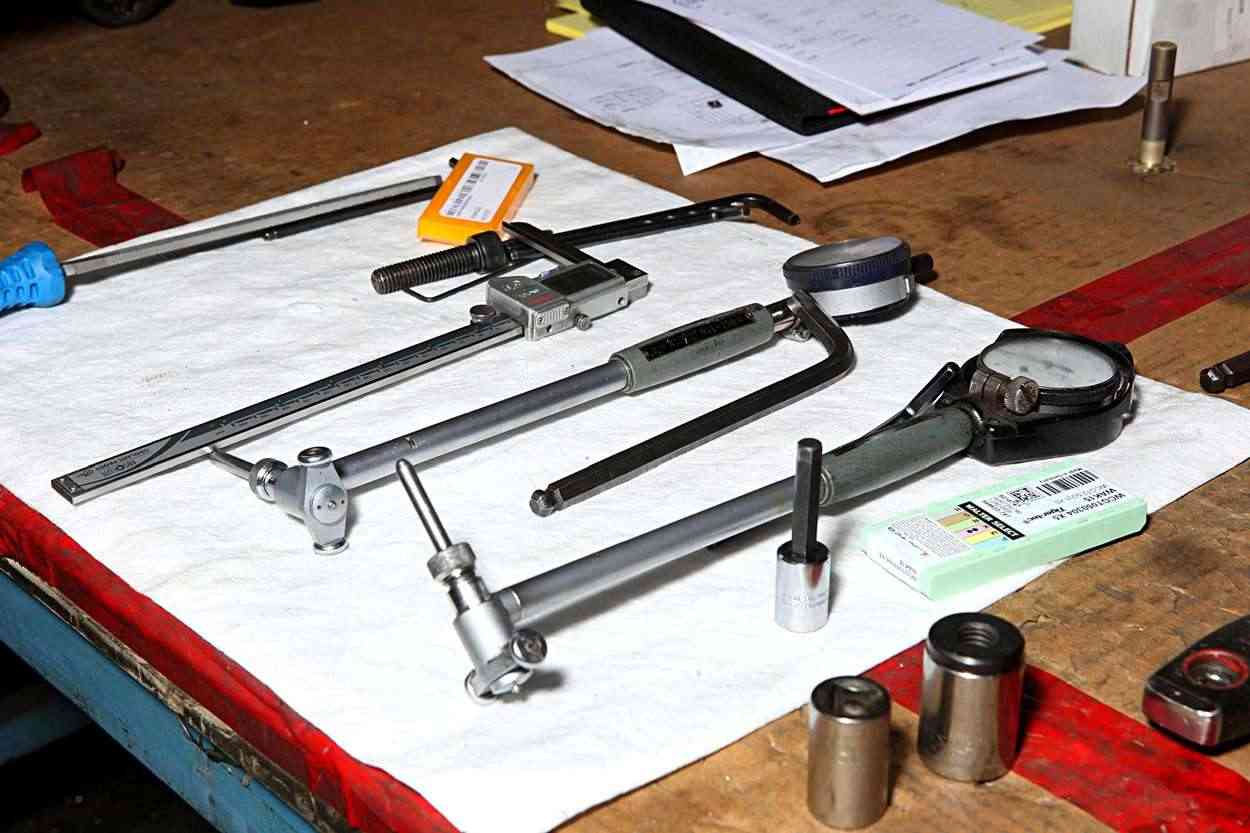
Project K24 Pt 1 Sleeving Tools
Tools of the trade
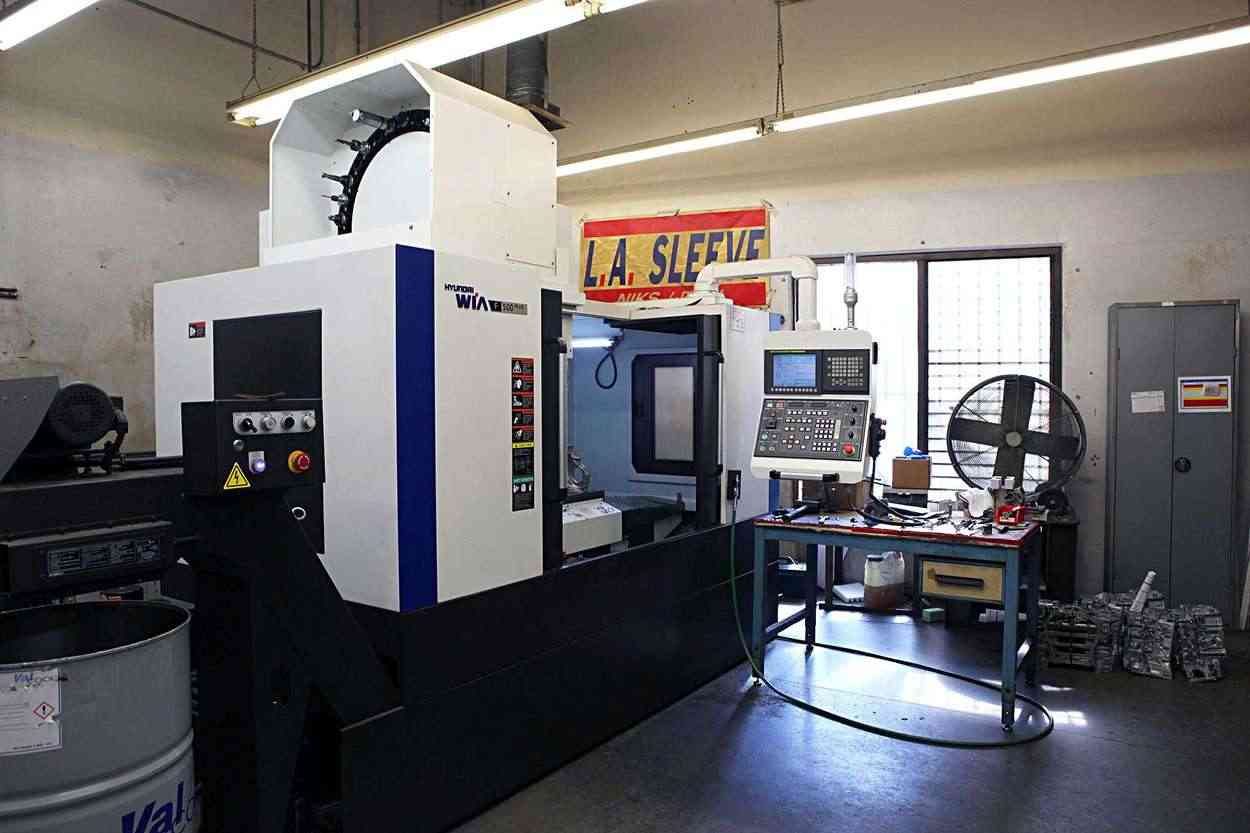
Project K24 Pt 1 5 Axis
This monster is a Hyundai 5-axis block machining center and it’s where we found our K24 block.
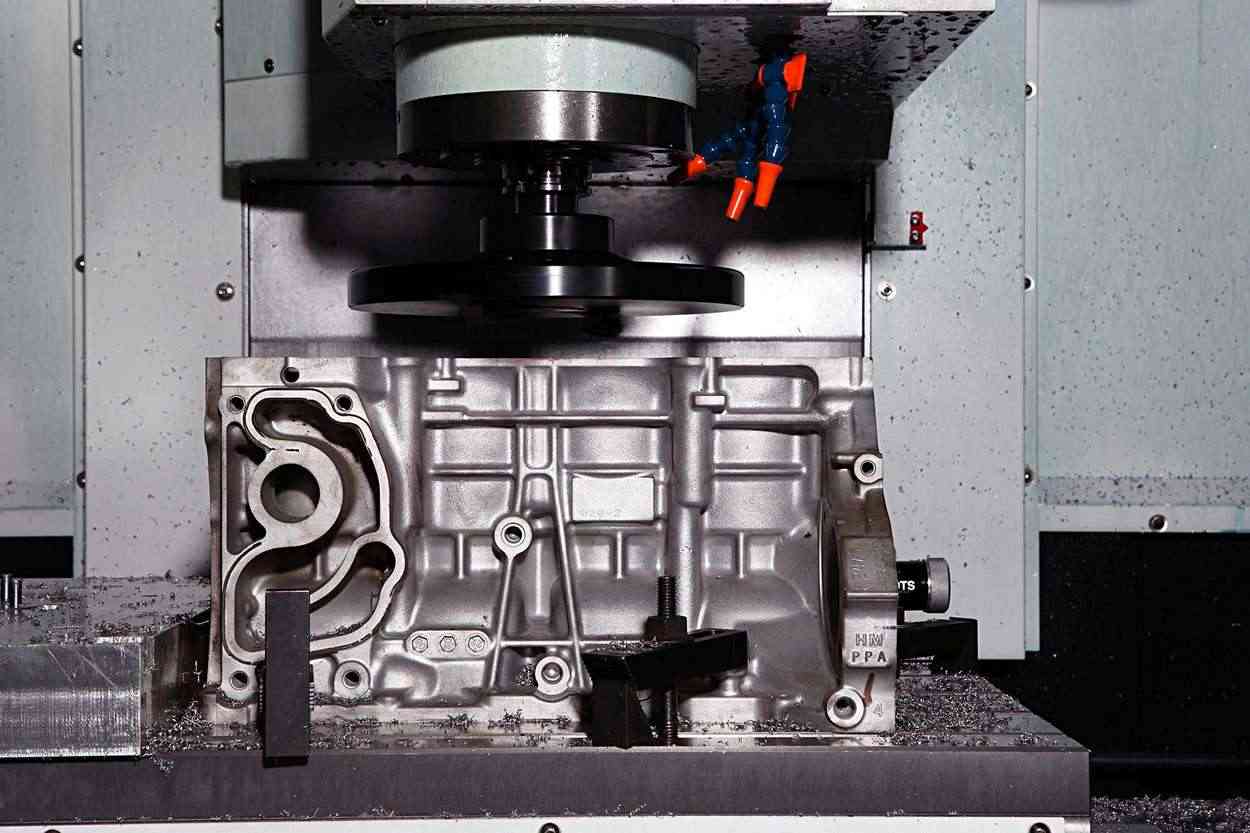
Project K24 Pt 1 Fly Cut Deck Machine
It was then locked into position to fly cut deck the top of our block.
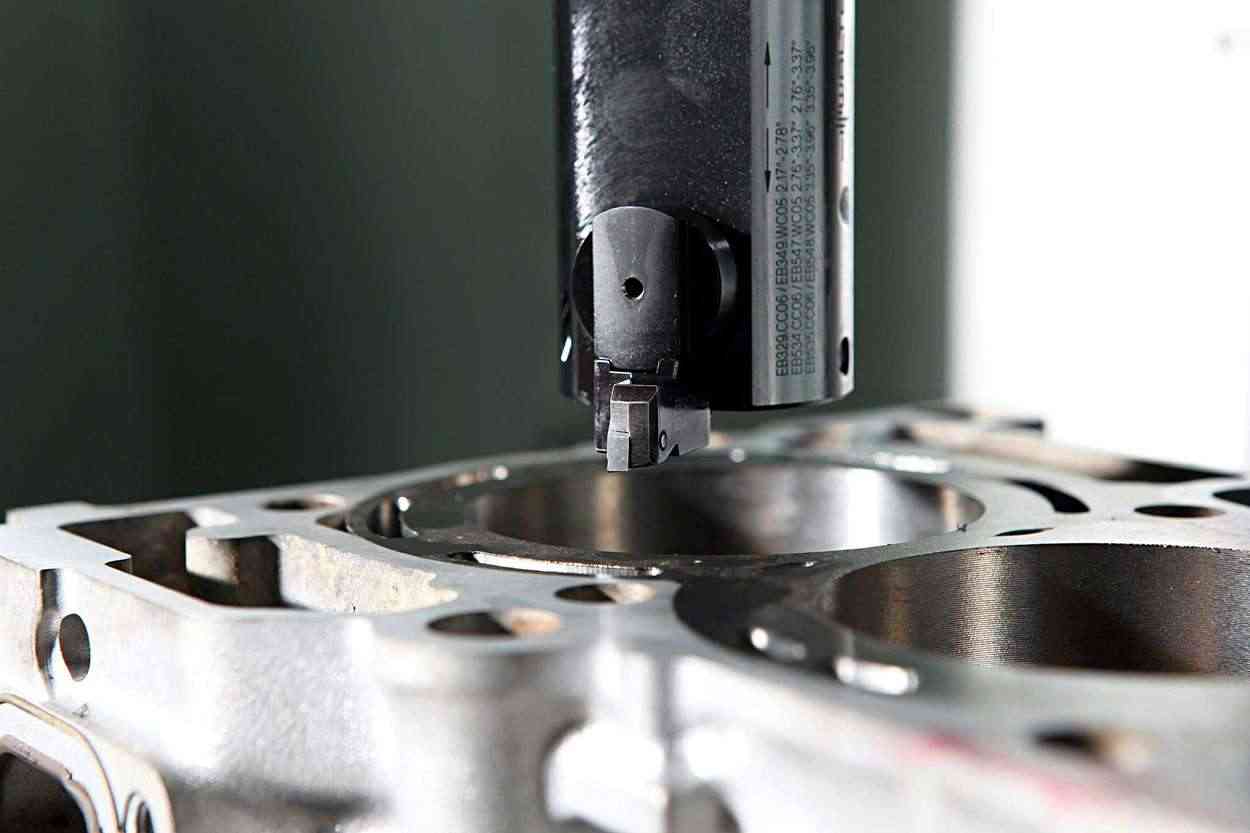
Project K24 Pt 1 Block Boring
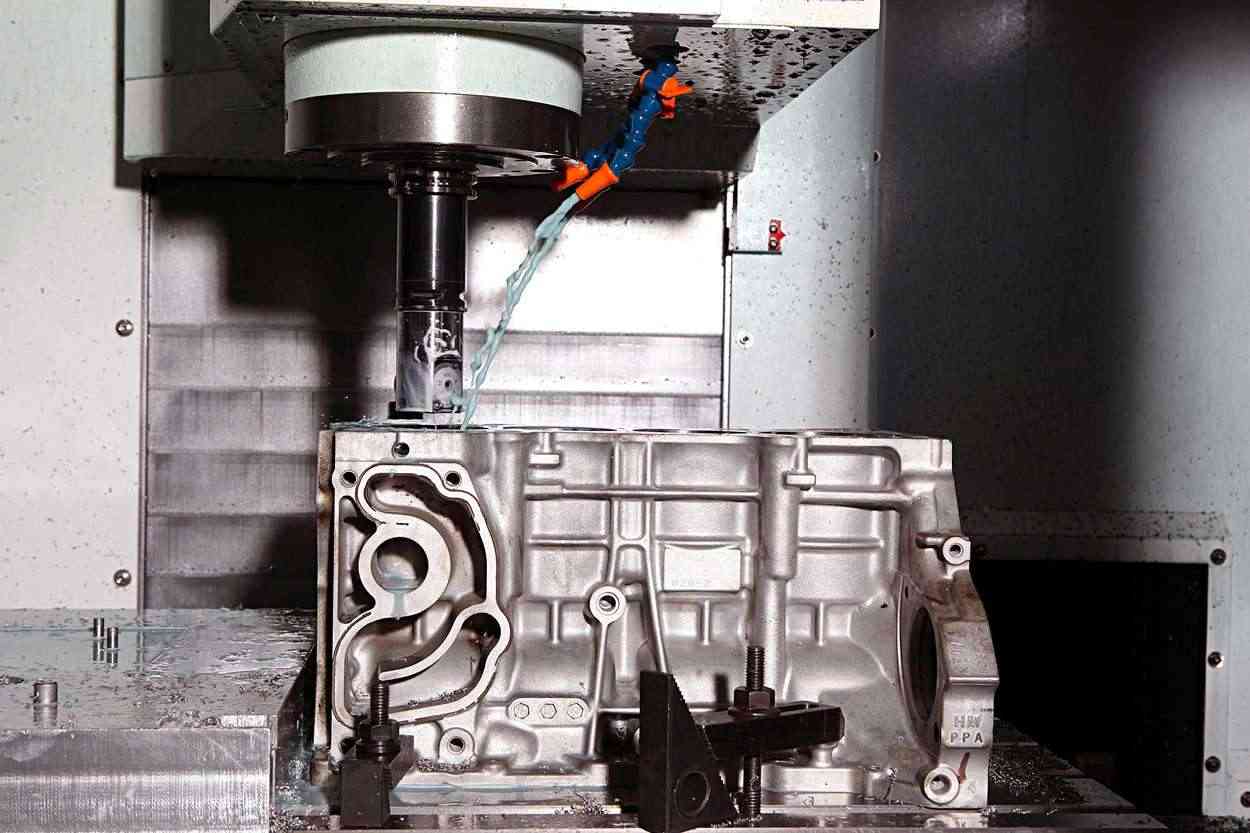
Project K24 Pt 1 Block Boring
Boring the block to the correct diameter in order to accept the new sleeves
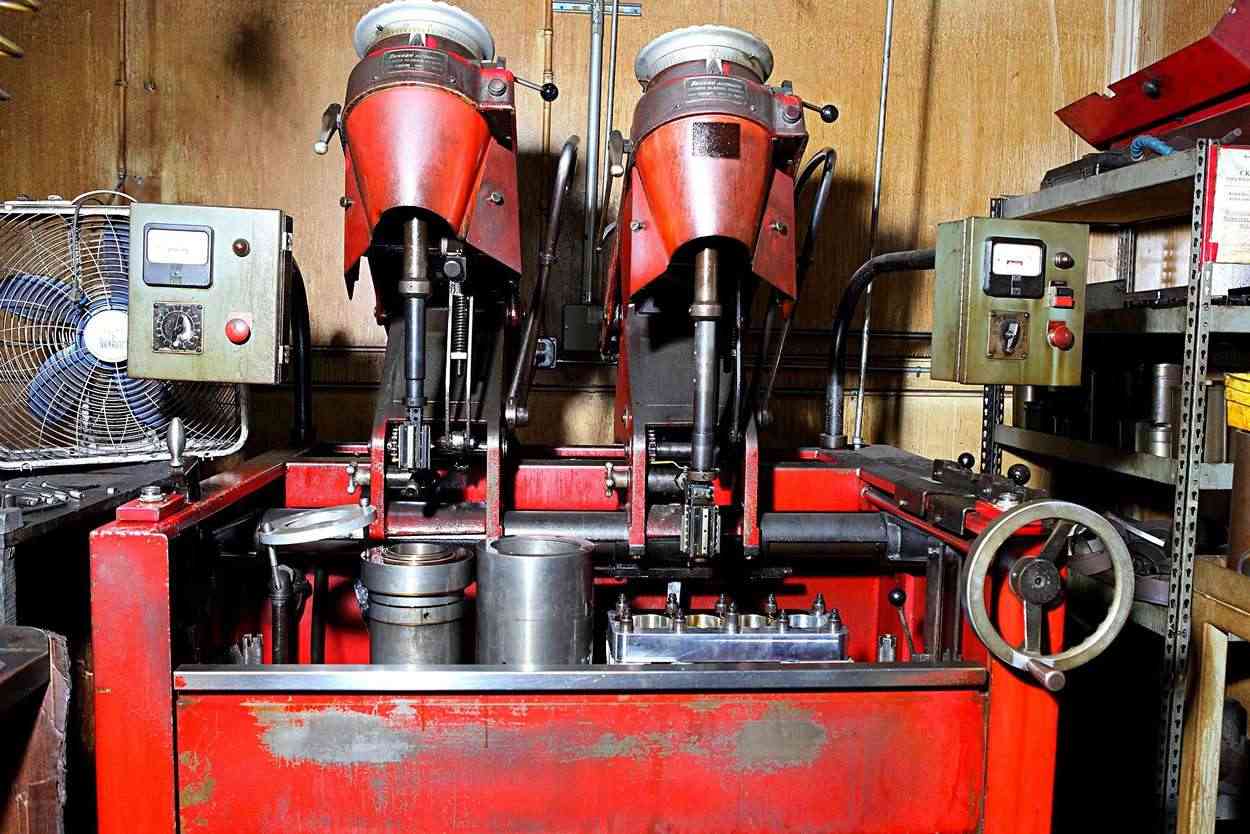
Project K24 Pt 1 Honing Center
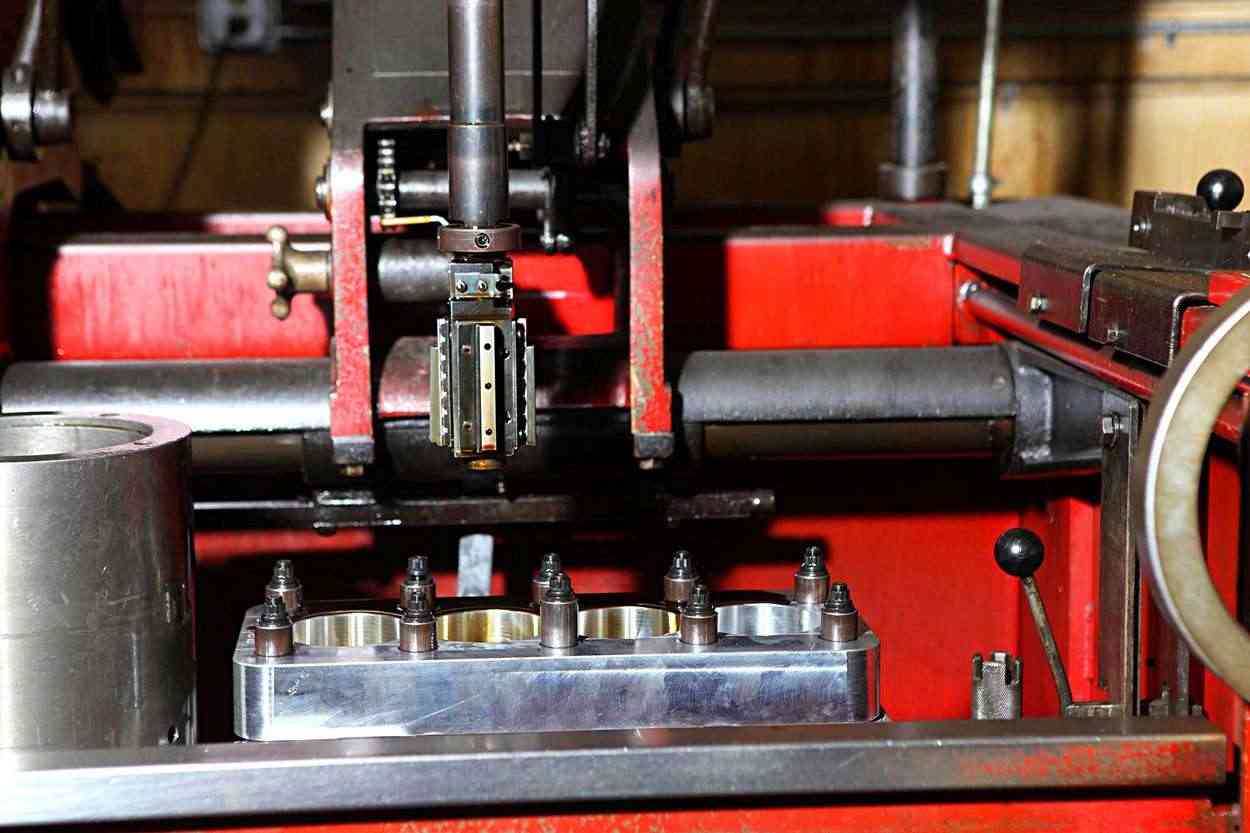
Project K24 Pt 1 Honing Center
This Sunnen CK-10 honing center is a rarity in that it was custom built for L.A.SLEEVE with dual heads and the crew gave us a quick demo using our 2.4L.
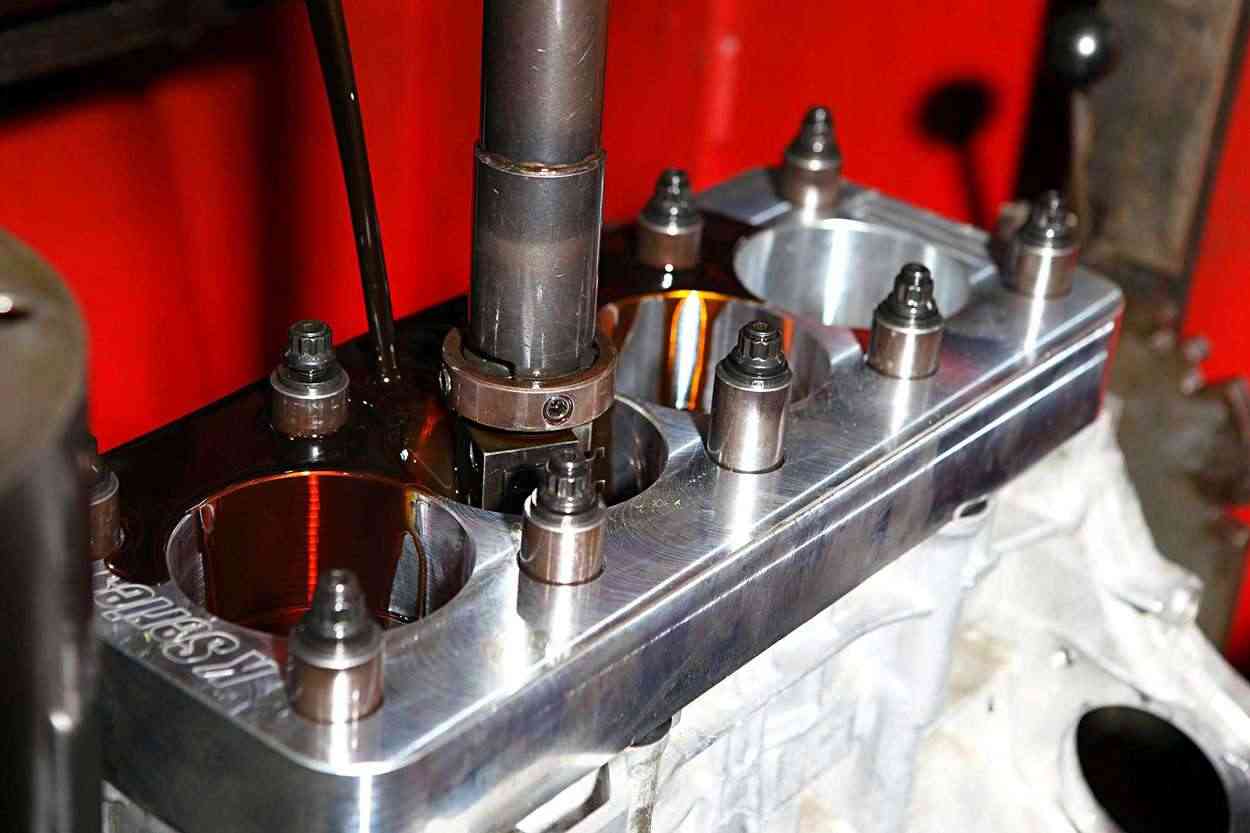
Project K24 Pt 1 Torque Plate
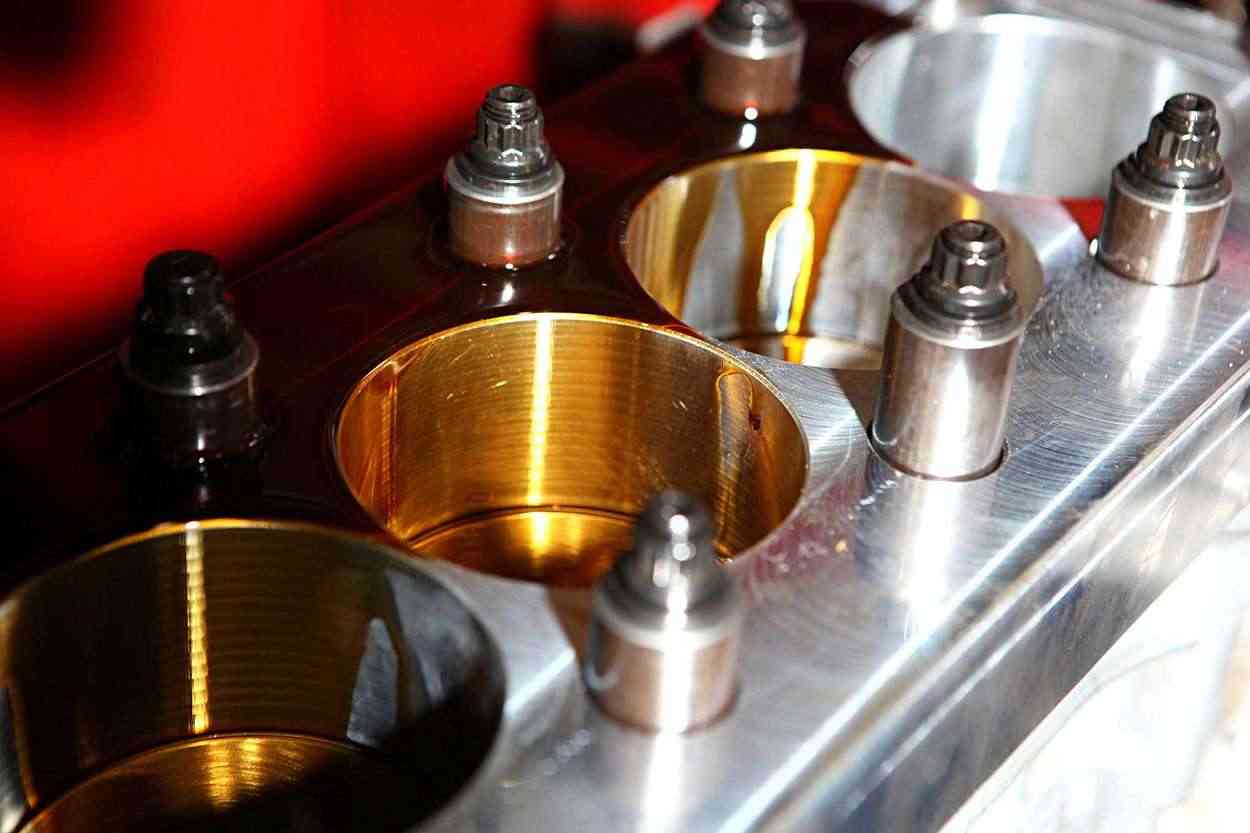
Project K24 Pt 1 Torque Plate
Our block was fitted with this torque plate used when boring and honing blocks.
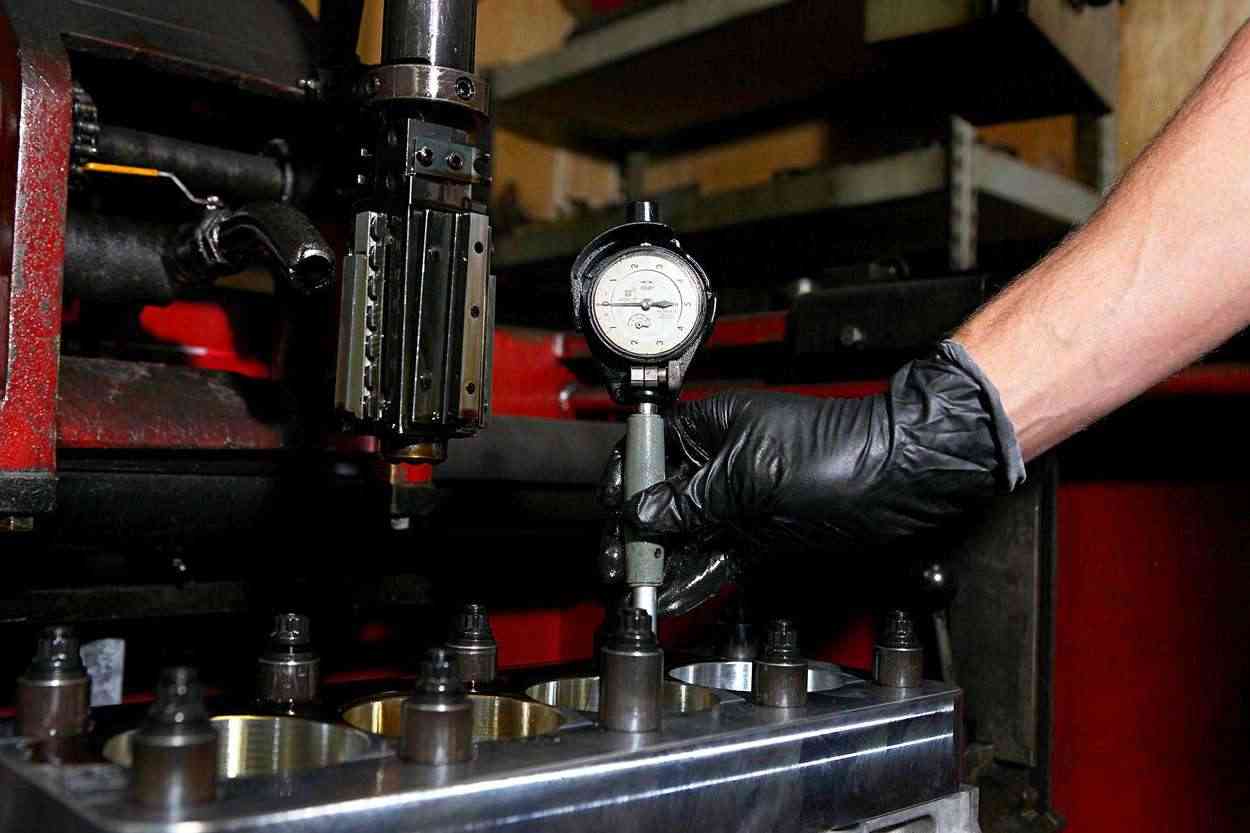
Project K24 Pt 1 Hone Measurement
After the process, the machine operator measures the final honed finish of the block for absolute accuracy.
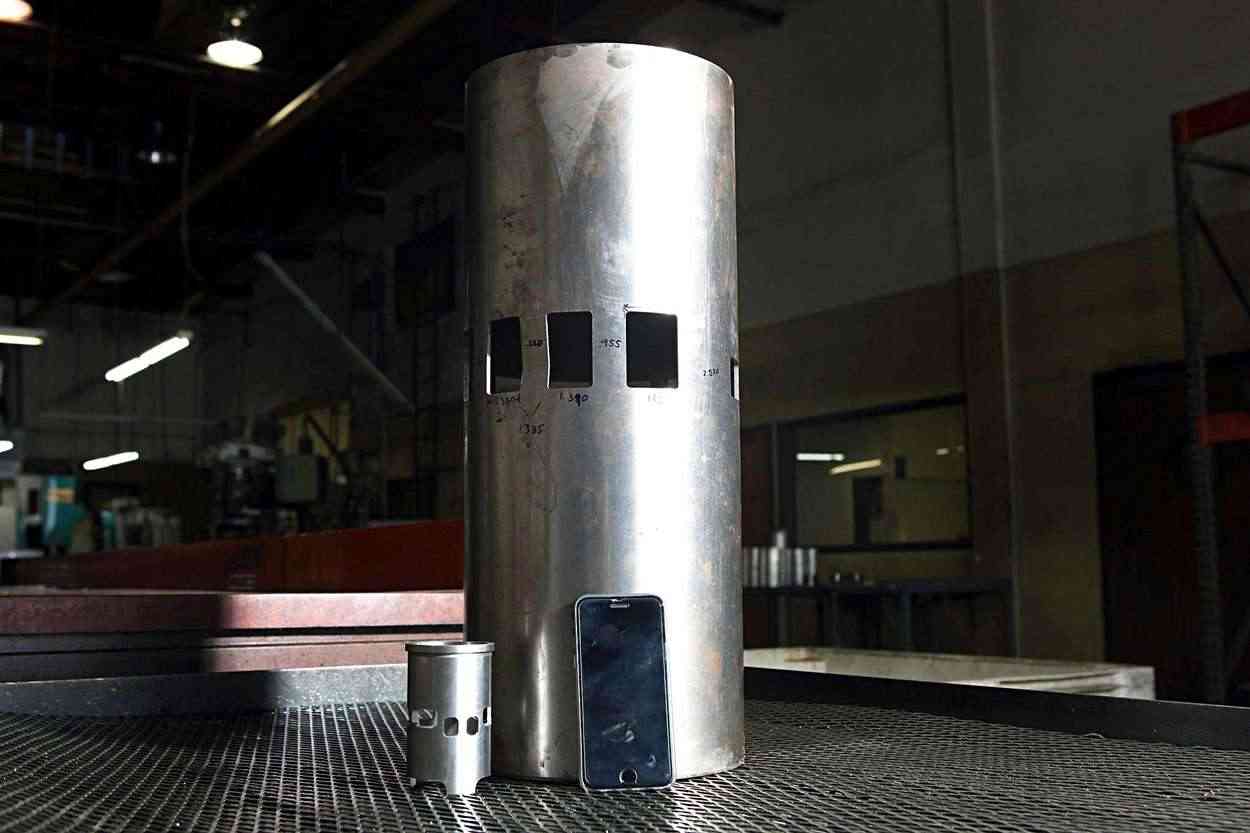
Project K24 Pt 1 Sleeve Comparison
To give you an idea of the variety of sleeves that this group produces, we placed their smallest two-stroke with a 39mm bore next to their largest, which uses a 17,780mm bore (pictured with an iPhone 6 for reference)!
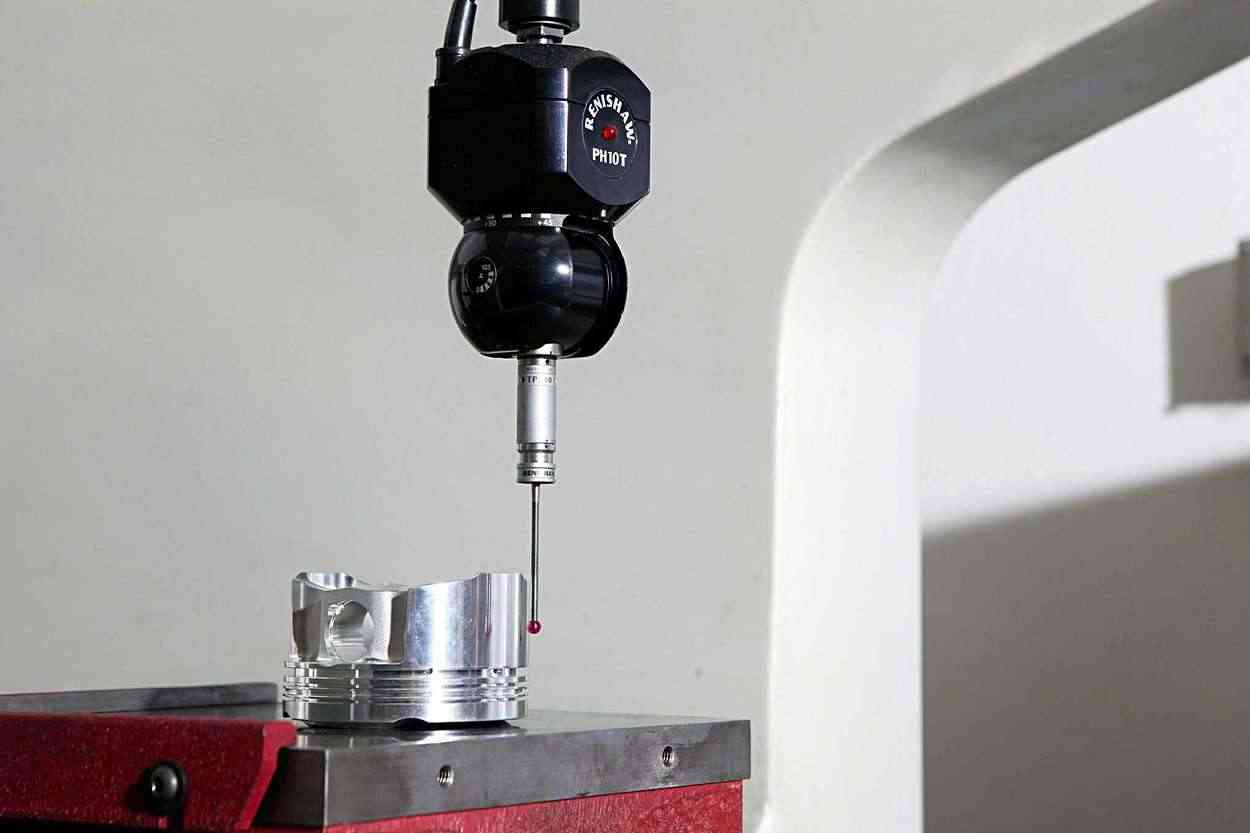
Project K24 Pt 1 Piston Measuring
Here, the CMM is used to accurately measure the proper piston to block wall clearance.
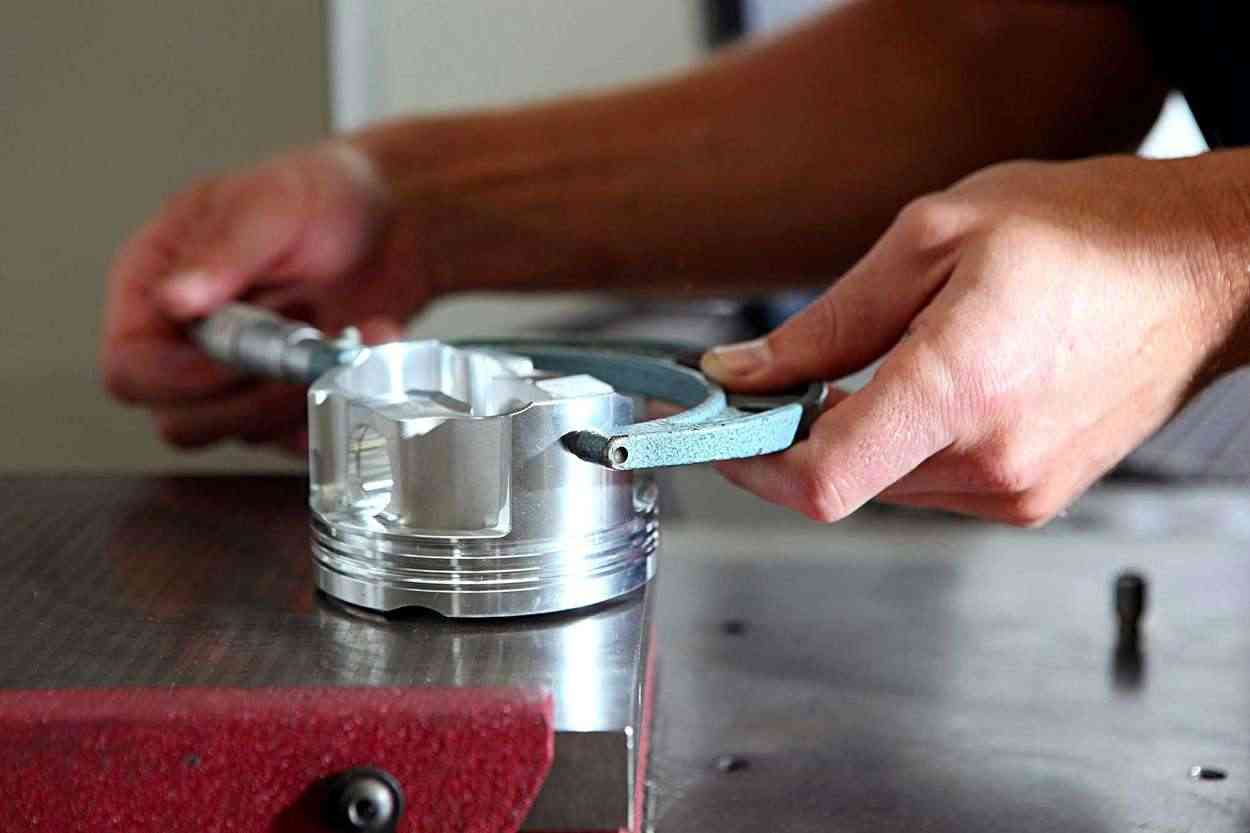
Project K24 Pt 1 Hand Measuring
As a means of double-checking piston diameter, L.A.SLEEVE opts to also hand measure. Metchkoff mentioned that this is an important step because the average end-user doesn’t have access to some of the advanced equipment that L.A.SLEEVE does, and hand measuring is far more common.
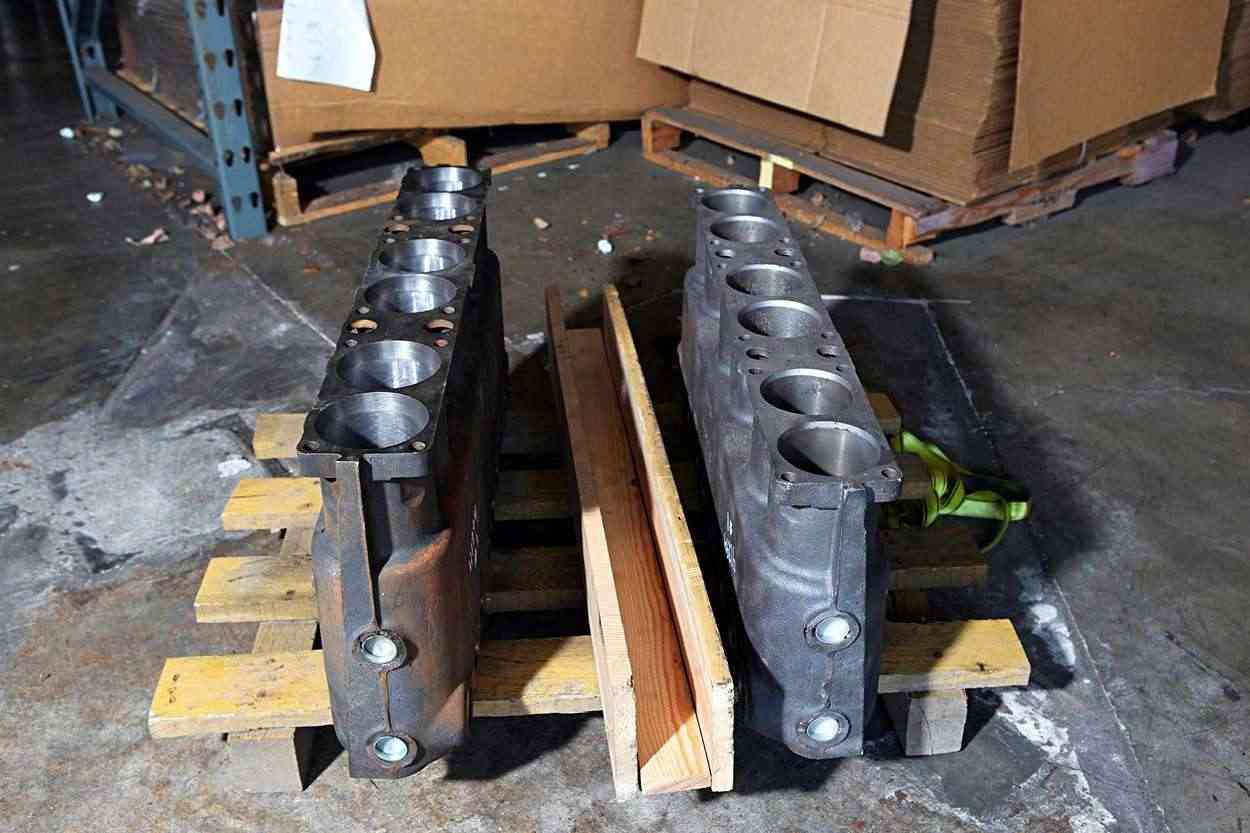
Project K24 Pt 1 Buick Inline 6
It’s not often that Dave and his family comes across something they can’t recall working on before. On the day we visited, these 1929 Buick Inline 6 blocks were something well outside the realm of their regular workload. But as with just about any application, if you can dream it, L.A.SLEEVE can make it happen.
What’s inside?
Whether turbo or supercharged, eventually I’d like to get a power adder bolted on to the project K24. In order to support the stress that I’m expecting this engine to endure, I reached out to L.A.SLEEVE about their Pro Cross Pro Cool sport compact open deck amphibious sleeves. It’s a mouthful and there’s quite a bit involved with these. First off, these are American made and manufactured by L.A.SLEEVE using Moly2000 ductile iron. Using the Brinell scale, a system developed in 1900 that serves as the standard for measuring the hardness of materials, these sleeves are rated at 270, which carries a mass and density far greater than Honda iron. The Moly2000 used is wear and shock resistant which means piston rings ride along stable bore surfaces for solid ring seal and compression boundaries. The sleeves are rated for over 1,100hp, far more than I ever intend to put down but if things ever got really crazy, they’re good for up to 52lbs of boost.
In regards to street cars, that Amphibious Pro Cross Pro Cool that you read above actually provides better cooling when water temps go up which is ideal for street applications. L.A.SLEEVE uses a unique vertical peak and valley plateau that results in a turbulent cross-flowing feature that holds coolant along the sleeve longer to fight overheating issues. Good for street, track, or both, these sleeves are ideal for any power set up whether aggressive naturally aspirated, turbo, supercharged or nitrous injected.
Courtesy of SuperStreetOnline.com
